14 Google Business Strategies for Effective Multifamily SEO
In the ever-evolving world of multifamily marketing, ensuring a strong digital presence isn’t just beneficial — it’s essential.
With the growing importance of search engine optimization (SEO) in multifamily properties, one cannot overlook the power of the Google Business Profile.
Here’s how to supercharge your multifamily SEO using this game-changing tool.
Understanding Google Business Profile’s Origin
Google Business Profile is the offspring of the erstwhile Google Places and Google+Local Pages, which were map-based and social platforms, respectively. By bringing these two together, Google offers a user-friendly platform packed with features, ensuring a multifaceted boost for multifamily SEO.
Google Business Profile By the Numbers
From analyzing engagement metrics to understanding their effects on local search positions, these numbers craft a narrative that can shape your digital approach.
- 84% of business-related searches are exploratory, with a mere 16% being specific searches.
- About one-third of local enterprises appear in over 1,000 exploratory searches monthly.
- 56% of user interactions with Google Business listings result in visits to the company’s website.
- 64% of customers turn to Google to obtain contact information for local enterprises.
- During weekdays, 94% of calls to these local businesses are initiated from Google.
- On average, a business gets noticed in more than 1,000 monthly searches through this platform.
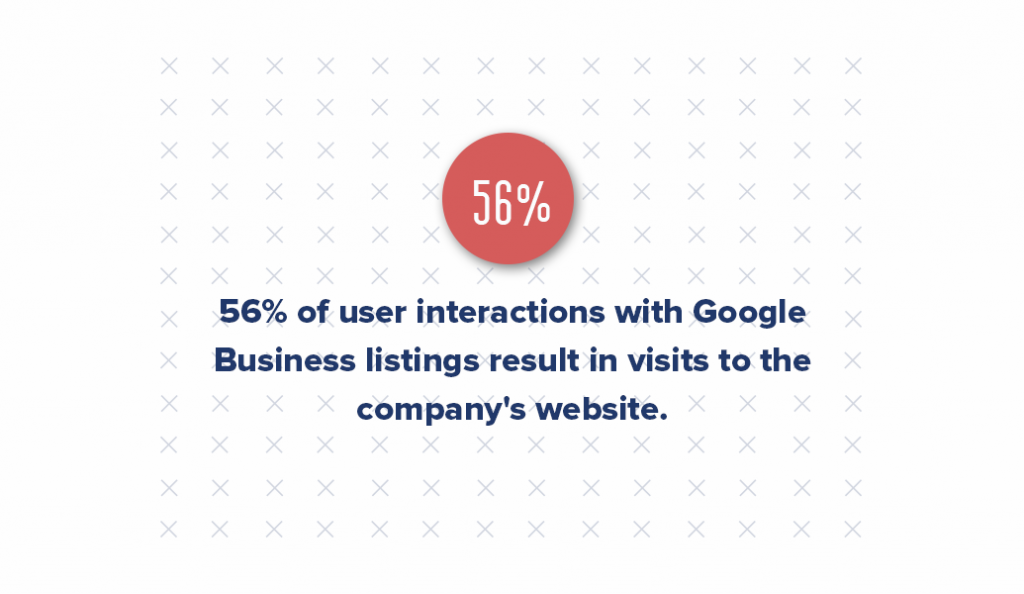
14 Must-Know Multifamily SEO Facts and Tips
- Spotlight on Maps: Having a Google Business Profile is like planting a flag on the digital map. It allows your property to shine on Google Maps, displaying key details such as the property name, contact details, and valuable user reviews.
- Consistent Updates are Key: Ensure that the information on your profile is up-to-date. An outdated phone number or address can turn potential renters away in frustration.
- Multiple Platforms, One Profile: Google Business Profile ensures your property’s visibility across various platforms — Google Search, Maps, and the former Google+. A digital trifecta, this increases your multifamily SEO strength.
- Transition Note: If you had a Google Places account, Google automatically moved you to a Google Business Profile. But remember to check and refresh your information periodically.
- The Social Edge with Google+: With the integration of Google+, your property can now organize virtual hangouts, curate content for specific circles, and share updates, enhancing multifamily SEO.
- Community Engagement: Use Google+ to share local events or news about your property. Google then indexes this content, making it discoverable in relevant search queries.
- Interactive Customer Care: Google+ also lets customers leave reviews and ask questions. Engaging with this feedback boosts your online reputation and displays a commitment to the community.
- First Impressions Matter: Ensure you have a captivating cover photo and a completed profile to capture interest at first glance.
- SEO Footprint Expansion: Every time your property appears on a Google page, your multifamily SEO footprint grows, enhancing your online visibility and attractiveness to potential renters.
- Staying Current: Regularly update your information. Fresh and accurate content is a cornerstone of successful multifamily marketing.
- Claim Your Space: Verifying your Google Business Profile is simple but crucial. Claim and verify your account to fully harness its multifamily SEO potential.
- Increased Engagement: Google+ features help you connect with individuals and businesses of similar interests, broadening your community and engagement.
- Maximizing SEO Impact: As you consistently update and engage on your Google Business Profile, Google rewards you with better search result placements, optimizing your multifamily SEO efforts.
- Forge Ahead in the Digital Landscape: Embracing the multifaceted features of Google Business Profile positions your property for success in the digital age.
The digital realm offers myriad opportunities, and with tools like Google Business Profile, multifamily properties can significantly enhance their online presence and multifamily SEO.
Ready to dive deeper and fully unlock the potential of your online strategy? Criterion.B’s expertise can guide the way. Connect with us, and let’s elevate your multifamily marketing game!
Top Strategies for Effective Multifamily Lead Nurturing
Multifamily marketing professionals face unique issues with lead nurturing through the marketing funnel.
For the multifamily market, issues arise in the form of heavy competition from neighboring apartments and issues with customer retention. For developers, problems arise with a lack of awareness limiting incoming leads. For vendors, issues arise with qualifying incoming leads to ensure they are legitimate and within the proper target audience.

While many methods help generate leads, the best way to ensure continued success is to nurture your leads. Through lead nurturing, continued strategic contact can help ensure that the leads you generate are properly qualified and remain interested in your offerings.
While lead nurturing is critical to the continued marketing success of any multifamily business, most companies fall woefully behind. According to HubSpot, 65% of B2B marketers have not established lead nurturing. This is a huge missed opportunity as organizations that excel at lead nurturing generate 50% more multifamily leads at 33% lower cost.
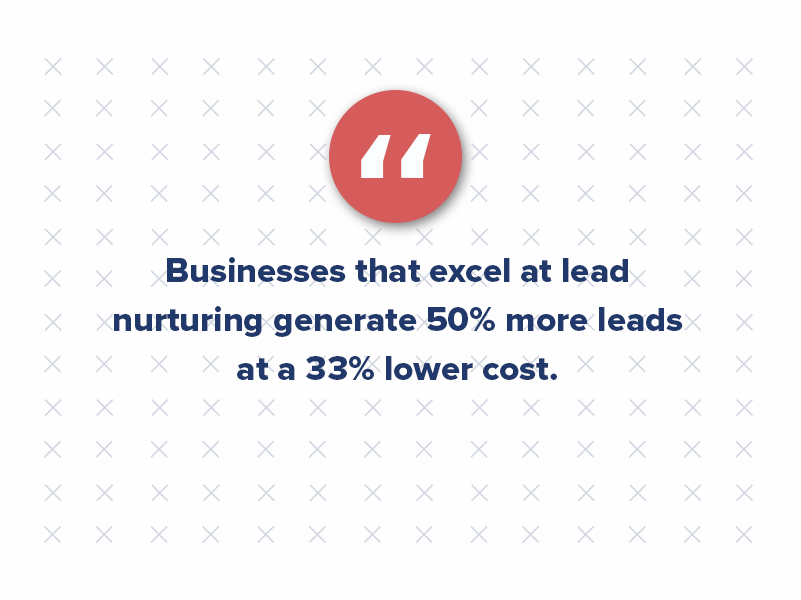
And Annuitus Group suggests that not only do companies who use automation to nurture their leads generate 451% more qualified leads but also that those leads are 47% more likely to make a larger purchase than their non-nurtured counterparts.
Knowing these numbers about lead nurturing, how many multifamily marketers miss it?
Valuing a Digital Multifamily Marketing Strategy
The commercial real estate industry is known for being behind the curve in adapting to the latest trends — especially technology. The same is true for marketing techniques.
Groups with no expertise in the industry have no idea how to use digital marketing to meet their marketing needs strategically. Partner this with a hesitancy to leave behind expensive “tried-and-true” outbound methods, and it becomes clear that commercial real estate marketers are unsure how to invest in digital multifamily marketing.
The key to robust digital marketing is to attribute value to that strategy. Many commercial real estate marketers fail to do so, hurting them in the long run.
The Advantages of Lead Nurturing
- Sustain Engagement: Keep your prospects engaged and maintain top-of-mind awareness for when they are ready to purchase.
- Guide Toward Sales: Nurture your contacts by seamlessly integrating sales messages within informative and valuable thought leadership content.
- Enhance Conversion Rates: Boost the likelihood of converting leads into sales by adopting a nurturing approach that adds value, ultimately maximizing the return on investment (ROI) for acquiring contact data.
- Prevent Lead Fatigue: Reduce the risk of overwhelming leads with aggressive sales pitches immediately after they download one of your resources. People generally prefer an educational and nurturing approach, which contributes to the success of building relationships and driving conversions.
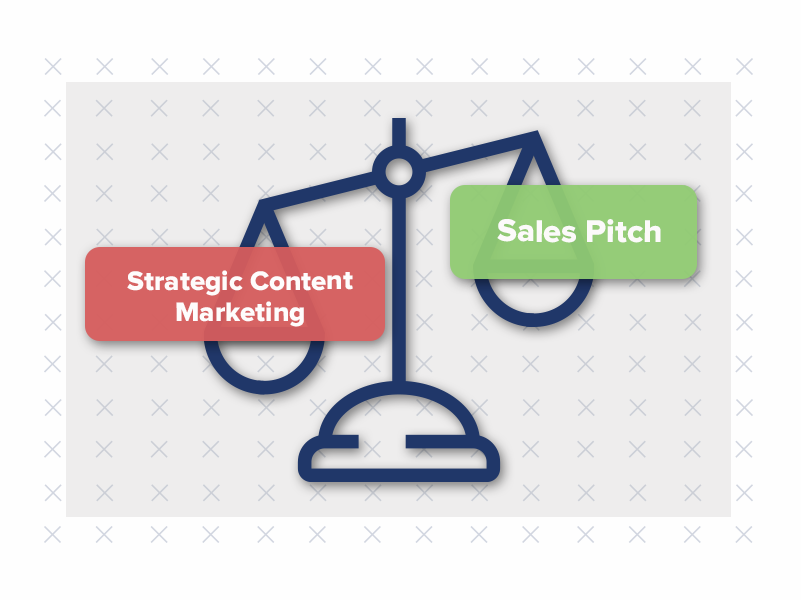
Finding a Balance
Digital marketing relies on the perfect balance of digital strategies, working together in an integrated manner to ensure consistent messaging and continued contact with an apartment lead or prospect. This means unique content — such as blogging, offers, social media content, email marketing, etc. — should all be tied around a central persona, strategy, and buyer’s journey.
Adding these aspects together and ensuring you have the team and resources to run it all adds up. However, compared to the average standard spend on outbound strategies, the cost is typically much less. In fact, inbound multifamily marketing costs 62% less than traditional marketing, yet each dollar spent on inbound marketing generates 3x as many apartment leads.
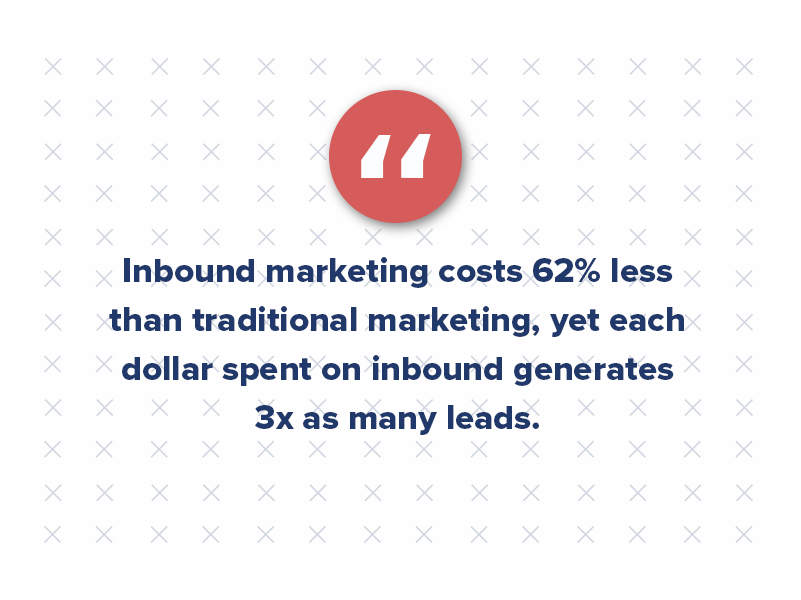
7 Types of Email Marketing Campaigns for Multifamily Lead Nurturing
Typically, when speaking of apartment lead nurturing, people instantly think of email drip campaigns. These are email campaigns automated to go out to a list over a specific period. While this can be a lead nurturing method, it is not the only method.
The fact of the matter is that many types of lead nurturing emails may be used depending on your needs. And each has a benefit or strength.
1. Welcome and Engagement Nurturing
When bringing new leads aboard, it’s wise to nurture them while they are still hot — actively interested. Capitalizing on the novelty of your introduction to them can be a great foot in the door to a positive impression. However, it’s also important not to scare away your multifamily leads by coming off as overeager. This is where a “welcome” campaign comes into place.
The benefit is two-fold: While engaging your lead with your brand, you can use this campaign to gather information to segment the lead further. Step one of a welcome campaign is always the same — you take the time to welcome your new multifamily lead and let them know what to expect. You can also offer a free resource.
Going an extra step, you can offer these leads a way to get customized information depending on their interests. This may take much work on your backend through list segmentation and automation software. But if the framework is there, it’s work that pays off. Offer a weekly newsletter on multifamily trends, interesting statistics, or relevant industry articles.
Engagement campaigns are similar and can often stem as an off-shoot of your welcome campaign. Want feedback on a certain aspect of your business? Engage a list focused on that aspect of a focus group or survey session, and motivate them to participate. In this form of nurturing, your imagination is the limit.
2. Qualification Campaigns
A qualification campaign allows you to hone in on a lead in a critical interest time. Let’s say a multifamily lead downloads a few offers in quick succession. Adding this lead to a qualification campaign lets you speak to them clearly as they try to discover the answer to their problem. Sending more related offers with opportunities to touch base with your team brings you closer to making the lead sales qualified.
3. Traditional Nurturing Campaigns
A traditional nurturing campaign takes your lead’s interest and continues to offer relevant educational material. These types of campaigns most often accompany your overall marketing strategy. This campaign includes keeping in touch with a multifamily lead, giving them small opportunities to convert.
4. Event Campaigns
Whether hosting an event online or in person, an event campaign can help pique interest and attendance. Even if you’re trying to boost attendance to your booth at an industry conference, event campaigns are a great way to spread awareness, boost interest (usually by a unique offer), offer reminders and other great tips leading to your event, and provide an excuse for strong feedback and thank you emails that can further promote conversion.
5. Promotional Campaigns
If you have some multifamily leads you feel are on the edge of closing, a promotional campaign might be a nudge in the right direction. A promotional campaign should be very controlled, not to cheapen the perceived value of your product. Discounts, free bonuses, or even referral bonuses are good ways to augment a promotional campaign.
6. Re-engagement Campaign
Do you have a lot of leads that have gone cold? Purging these leads from your lists can seem like a waste. Instead of letting these multifamily leads go, why not implement a re-engagement campaign? This includes reminding them of your value or offering them something special to engage.
7. Upsell Campaign
Don’t let the title concern you. While upsell campaigns have a negative connotation, they don’t always have to mean or reflect upselling. Rather, an upsell campaign promotes your offerings to existing customers. In some cases, this means offering additional services.
Return Is in the Eye of the Beholder
Knowing that multifamily lead nurturing is far more complex than most marketers realize, the question becomes, which form offers the best return? The answer is not so simple. While each of these nurture campaigns requires a certain amount of upfront investment, the payoff depends entirely on your business.
The question comes down to which problem you are facing the most. If your issue is moving leads down the pipeline, a qualification campaign will most benefit your needs. If you are working on reviving multifamily leads, engagement, and re-engagement campaigns should be your go-to.
Choosing a nurture campaign tied to your strategy is more important than taking a set-it-and-forget-it route. This is where you can make the most significant impact on your business. Only then will you see sustainable success in nurturing your multifamily leads.

What to Expect When Starting an Inbound Marketing Campaign
Today’s marketing has evolved from interruptive tactics to a customer-oriented approach called inbound marketing. This route empowers your customer to be equipped with all the information they may need to decide without feeling like they’re being “sold to” from the first interaction.
In commercial real estate, everything from a property management company to multifamily vendors serving the space needs a marketing tactic that relies on warm leads.
When evaluating whether an inbound marketing campaign is right for your multifamily business, there are a few things to understand first.
Time Is an Investment
The hardest thing for clients to wrap their heads around is the time it takes to get an inbound marketing campaign in full swing. While everyone is looking for instant gratification for their multifamily marketing ROI, we remind our clients that time is an investment. We set expectations early on that inbound marketing isn’t a quick fix, but rather a long-term solution.
Let’s say a multifamily property wants to create buzz during lease-up for three months. A full-funnel inbound approach may not be ideal for this short-term need. A social media marketing strategy may better fit this quick fix. However, if they want to maintain a marketing strategy that identifies prospective residents, targets content, and creates a steady lead nurturing system — inbound marketing may be the ticket.
Inbound marketing is built on steps that can’t be skipped or left out of your strategy. A ramp-up period for inbound may take the three months that the multifamily business above wanted for simply heavy promotional marketing.
Rather than short bursts of promotion, with inbound, you have to build a solid foundation first. If not, your entire inbound marketing campaign process will be working backward to fix the broken links.
However, when you give inbound the time it needs to get the working pieces in place, you start seeing your work pay off.
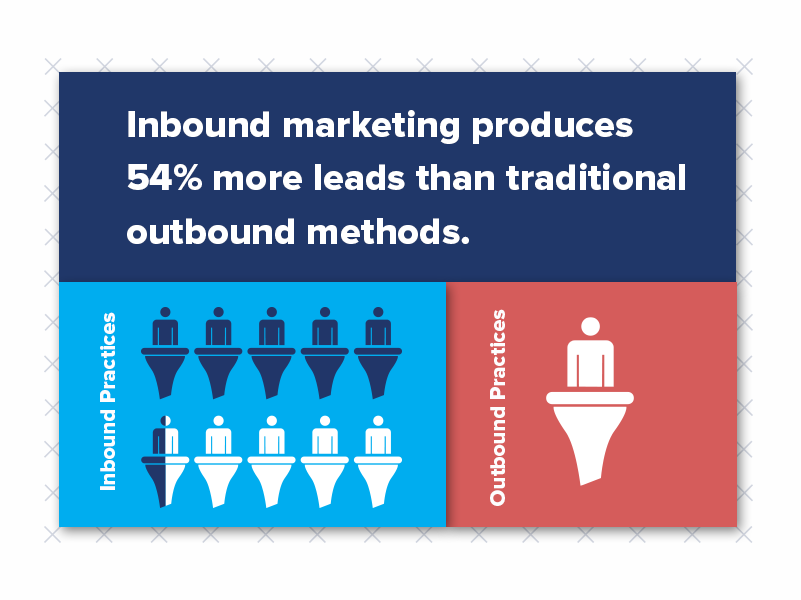
Consider the following stats from HubSpot, a leading marketing automation software company:
- 92% of companies using inbound marketing increased their traffic, and 40% increased their traffic by at least 75%.
- 85% of companies using inbound marketing increase traffic within 7 months
- Blogging champions as the #1 method for increasing traffic, with SEO in second place
- “Other” inbound marketing techniques (i.e., landing pages and calls-to-action) are ranked the #1 method for increasing leads
- 42.2% of companies using inbound marketing increase their lead-to-sale conversion rate
- 49.7% of companies using inbound marketing increase sales within 7 months
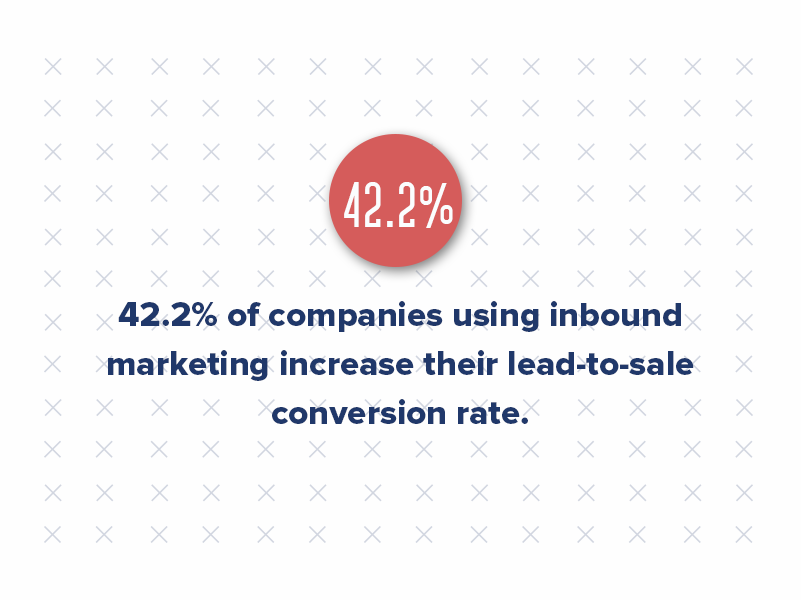
Results Come From Strategy
Like many things in life, you can expect to get out of an inbound marketing campaign what you put into it. When you’re looking to see the magic of inbound marketing in action, you can’t sit back and let it go on its own. It takes constant review, regular planning, and lead nurturing. This could be in the form of ready-to-rent leads showing interest in your property solely by viewing your content and social media.
By not taking shortcuts, you’ll be pleased with the results your campaign brings in. But what takes so much time?
Buyer Personas
The first step is always research. The cornerstone of any inbound marketing campaign is developing buyer personas. Buyer personas are semi-fictional characters representing your ideal resident or customer and going beyond just demographics. Your personas will help target all content and strategy surrounding the campaign. These can take a few months to develop, as it’s important to interview residents to get insight into your target audience.
Keyword Research
Much of the ramp-up period consists of research. Once you know your target, you need to know how you rank for industry-specific jargon your audience uses. For instance, if your business is a real estate investment company, maybe you rank high in search terms for “multifamily investing” or “real estate investment firm.” By using a keyword analysis tool like SEMRush, Ahrefs, or Moz, you can identify how you’re ranking for very specific keywords. You can then optimize the content you create to feature those keywords.
Multifamily Website Design
Before setting up a buyer’s journey for your target resident to navigate online, your website has to be optimized for user experience (UX). A poor website can halt the effectiveness of a well-planned inbound marketing campaign. For instance, if people can’t find the leasing page or have difficulty finding floorplans, they’ll likely lose interest. Do not make your audience hunt for what they are looking for.
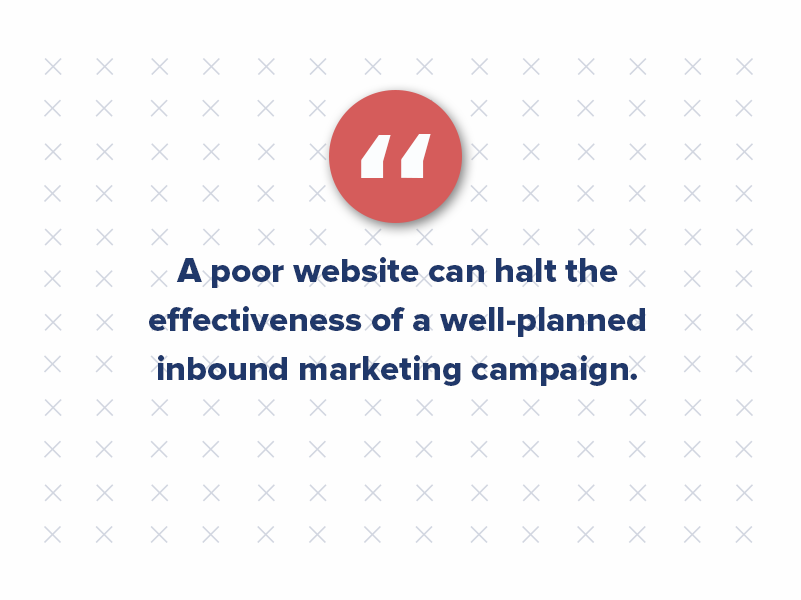
Content Mapping
You can plan the content once you’ve researched and optimized your website. You’ll want to create different content types for each stage in the buyer’s journey — awareness, consideration, and decision. Instead of publishing blogs on the fly or posting to social media randomly, plan out your content strategy. This will give your inbound marketing campaign direction, purpose, and organization.
HubSpot Set-Up
HubSpot is an amazingly effective tool for marketing automation. It helps build and automate workflows, email campaigns, social media scheduling, analytics, and more. Setting up your workflows, email templates, and building out social media accounts in HubSpot helps create a solid foundation.
Goals and Analytics
Without this step, there’s no way to assess the performance of the strategy you’ve put in place. Set SMART goals upfront — Specific, Measurable, Achievable, Relevant, and Time-based. Then, establish regular checkpoints to see how your strategy is doing. Tools like HubSpot, Google Analytics, and Klipfolio are great tools for measuring the success of your inbound marketing campaign.
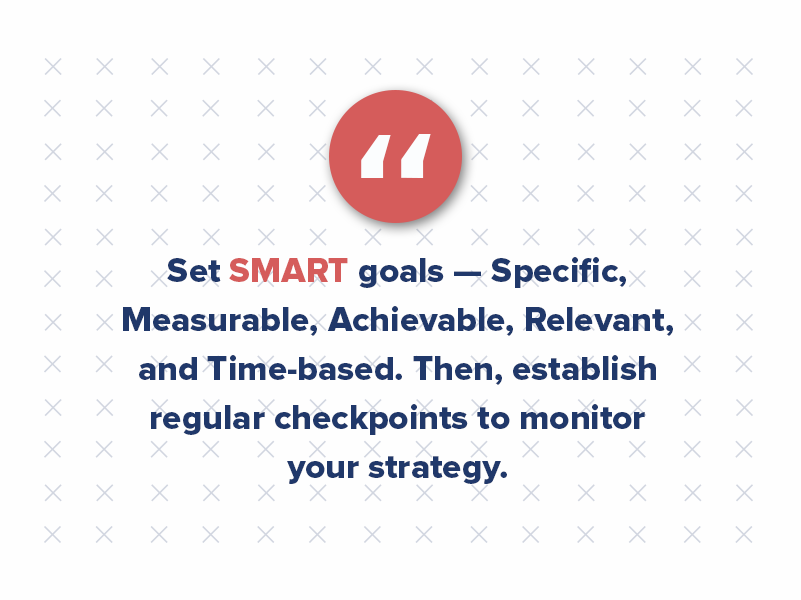
Now that you have the groundwork set, here comes the hard part — staying fully committed and on track with the goals you set. To be successful at inbound marketing, you must have faith. Those willing to let the process work through its entirety will see higher levels of success than those who change direction because they don’t see immediate results. Pausing your efforts or adding multiple layers to your pre-constructed plan will only lessen your impact. Be patient — we can’t stress this enough.
Become the Multifamily Marketing Expert
Inbound is a long, winding road of strategy, testing, retesting, and careful planning. While it may seem overwhelming at first, HubSpot supplies ample resources to teach new customers how to become inbound experts and more!
However, when it comes to being an expert and leader in inbound marketing for your industry, there are options. You can take it on yourself — which will likely be an overwhelming feat. You can hire an in-house inbound marketing expert, leaving the implementation and execution to them. If this isn’t your business’ specialty, you don’t have to go at it alone. You can also leave the heavy lifting to an inbound marketing agency.
As experts in inbound, an outsourced multifamily marketing agency (like Criterion.B) can put a business’ mind to ease by handling the entire process.
Taking Your Real Estate Leads From Multifamily Marketing to Sales
As inbound marketing begins to gain traction, more and more businesses are looking to adopt it into their strategy — either through a multifamily marketing agency or internally. Inbound promises to revolutionize multifamily marketing results for many of these businesses. But without deep research into the process, they find themselves frustrated at slow results or even lack of results.
For commercial real estate companies, in particular, doing inbound internally has quite the learning curve. With the business combining only certain inbound methods, they wonder why their methods are not working. And they may not even understand the need for a full inbound funnel.
However, when done properly, inbound marketing can be incredibly effective. Inbound can also be a great resource for an industry like real estate that’s stagnant in its marketing efforts.
The inbound funnel is undoubtedly the most important factor in inbound success. Every action in your marketing endeavors should point to a step in that funnel and how it relates to your buyer’s journey. But to understand how that funnel works, it’s essential to understand the role of lead qualification in the success of an inbound approach.
What Is Lead Qualification?
When working through an inbound funnel, the goal is to qualify leads. But what does it mean to qualify a lead?
Lead qualification involves gathering information about a prospect to determine where they fit in the buyer’s journey. This helps move a lead to a marketing qualified lead (MQL) and an MQL to a sales qualified lead (SQL).
The level a lead is at in the marketing funnel before reaching the customer is known as the lead’s lifecycle stage and are as follows:
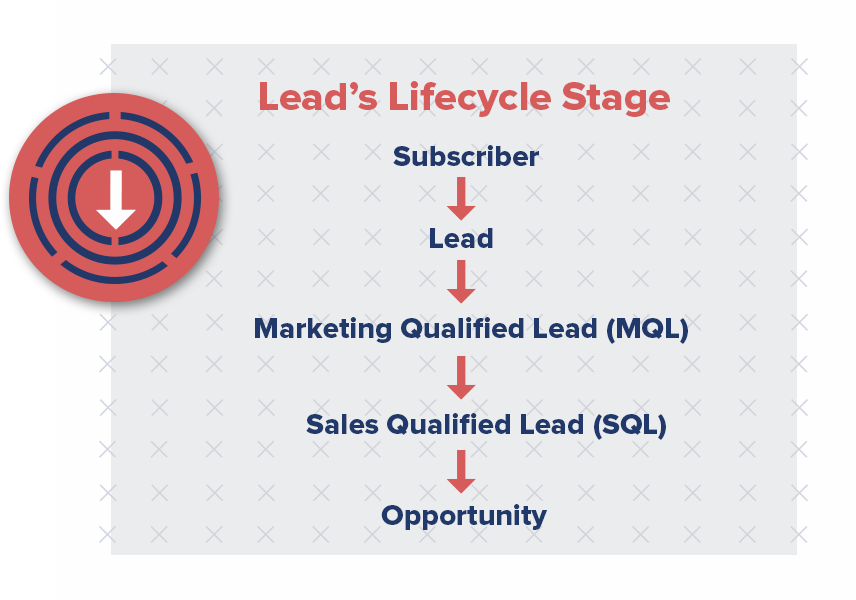
However, the definition of these lifecycle stages concerning your funnel varies depending on your business. For example, let’s say you worked at a property management company trying to attract residents to one of your properties. In that case, your lifecycle might be defined like this:
- Subscriber — A subscriber to your blog or newsletter but who has not engaged in downloading an offer or engaged for rental information.
- Lead — Someone who has downloaded a neighborhood guide or other entry-level information on your site but has not tried to engage about renting.
- Marketing Qualified Lead — Someone who has asked for information regarding rentals, be it availability or price range but has not engaged with a sale representative yet.
- Sales Qualified Lead — Someone who has asked for information on renting and fits/can afford the space; the person has also talked to a sales representative.
- Opportunity — Someone who has shown interest in renting and has engaged or seen the property.
For each company, the criteria may differ. If rents are a certain amount, or your complex is targeted toward seniors, a marketing qualified lead or SQL might need to match certain criteria before going forward. The next issue becomes — how do you get that information?
The Steps in Qualifying Your Real Estate Leads
Information is the end-all-be-all of multifamily marketing success. But gathering information is an increasing challenge. Digital concerns about privacy and security make the availability of information online difficult. Since information is needed to qualify leads for your sales team, it creates a need to be inventive in gathering information from leads. The best way? By creating an exchange.
The exchange of information for something else is key to the foundation of inbound marketing. Inbound marketers create offers that relate to each stage of the buyer’s journey. For example, they can offer an infographic on the neighborhoods in your city and make the offer downloadable in exchange for contact information.
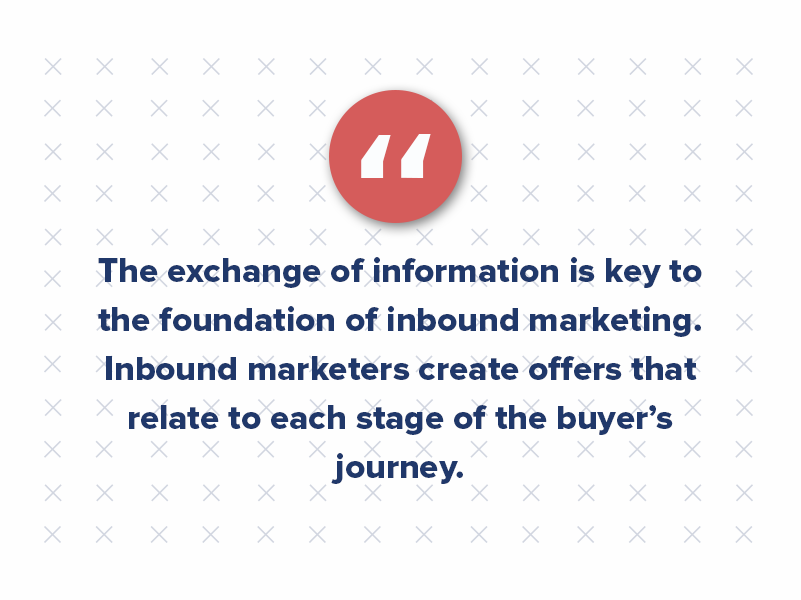
In this trade-off, consumers get valuable information, and their information is the price associated. The questions in the form of an offer, in turn, help the company qualify the lead. This helps expedite the sales cycle, rather than having sales pursue leads that are not ready to be contacted.
Again, determining the necessary information to qualify your real estate leads depends on your business, service, or product. If you’re a company offering residential services to multifamily residents, you may not want to ask revenue questions like you would when partnering with an apartment complex. Instead, you may want to know how often they need your service. It’s essential to ensure the information is relevant to the potential lead and that you’re asking the questions. For instance, not asking sales-focused questions when a lead is looking at an awareness offer.
This helps keep leads engaged while also gathering information for business needs. Knowing the answers to these questions not only qualifies your leads but gives you a better understanding of your potential customer.
Where Lead Qualification Goes Wrong
Now that you understand the importance of offers and forms, the next step is implementing this strategy. How do you accomplish this? It may seem like a straightforward process, but many intricacies are involved.
Asking for the Wrong Information
If you’re offering a prospect an awareness offer, then you’re not going to ask for detailed information about their background, job title, etc. That’s because the value of that information is held in higher regard to the prospect than the offer.
The lead’s lifecycle stage doesn’t match what you’re asking at the time. By the same token, you wouldn’t want to offer a demo of your resident management software to a property management company by only asking for name and email; otherwise, you might get a lot of parties not ready to buy or not within the scope of what your product supports. These issues can cause a loss of real estate leads or even an inaccurate funnel.
Failing to Follow-Up
Another issue companies face in lead qualification is failing to follow up on their real estate leads. Getting a lead that downloads your offer is great, but you can’t be sure of their intent without further engaging the lead. This can be anything from sending a series of nurture emails to following up with another offer or adding them to a curated newsletter. This nurturing lets you measure their continued engagement and gives you more opportunities to further qualify the lead with other content.
According to Invesp, 80% of new leads never convert into sales. With lead nurturing, however, companies can see up to 50% more sales-ready leads at a lower cost. Why? Because lead nurturing can be automated, it’s simple, and it helps to measure a lead’s readiness.
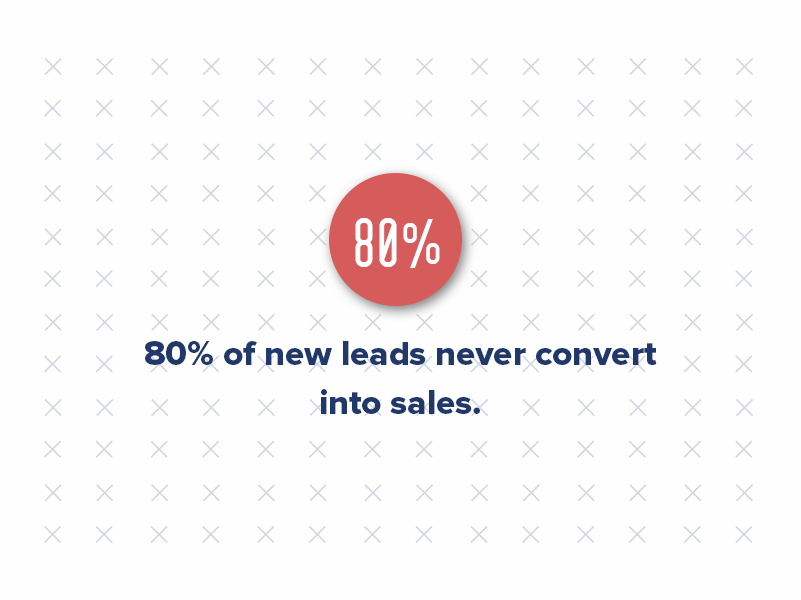
The most important thing about lead nurturing is to keep doing it. On average, it can take up to 8 marketing touches from a top-of-the-funnel lead to a closed-won customer. For many of your real estate leads, it may take even more. That means continuing with your nurture and follow-up with leads to ensure sales has a strong close.
Understanding Intent vs. Interest
Perhaps one of the biggest hangups in qualifying a lead is failing to understand a lead’s intent versus interest. A person in the neighborhood where you just built your swanky new apartment complex might have interest in your content because of location. But if they don’t fit the budget and aren’t looking to move, the intent is not there.
Marketers mistake interest for intent all the time, often leading to a marketing qualified lead being passed off as a SQL when that’s not the case. There are two options to help in this predicament, though — lead scoring and decision-based offers.
Marketing Automation Software
If you have access or interest, a marketing automation software like HubSpot offers lead scoring as a means to qualify your real estate leads. Lead scoring involves tracking any lead in your CRM across your site. With lead scoring, you can ascribe value to different blogs or page views, offers or email interactions. When a lead reaches a certain score, decided on by your team, they become sales qualified.
Decision Stage Offers
The secondary option is to use decision stage offers as a means of qualifying leads. This can be anything from making an appointment to see a space to offering a demo of a software. Creating a broader base of options for these offers can help you determine which leads are ready to buy. Leads who fail to engage with a decision offer when you have an array to choose from are likely not there yet.
Passing the Baton to Sales Qualification
So, your real estate leads are ready for sales — now what? Just because a lead is sales qualified, does not mean they are a good fit. Sales qualification is what makes a lead an opportunity and closes out the inbound funnel; it falls in the hands of the sales team to do this qualification. The reason? Just because a lead has interest and intent, doesn’t mean they meet the criteria of your product.
While lead qualification can help weed out those who don’t fit, it takes the sales team to assess fit, often using BANT (Budget, Authority, Needs, Timeline). What BANT does is ensure that the lead has the money, authority, and ability to use your product. Leads with poor BANT scores aren’t necessarily a waste of time, they may not be ready yet. But if that’s the case, it’s better for them to return to the cycle rather than have sales try to close a deal.
As a marketer, you’ll likely never know off the bat if a lead meets sales’ needs. That requires sales engaging with the lead first. Instead, it’s imperative to use lead qualification methods to ensure your real estate leads are qualified from a marketing perspective and ease sales’ jobs on the rest.
Creating Content to Drive Your Buyer Persona Down the Multifamily Marketing Funnel
In today’s competitive landscape, content marketing reigns supreme. While everyone acknowledges the power of content, its true potential is unleashed only when there’s unwavering consistency behind every piece of content created. Companies that are dedicated to producing high-quality, steady content capture attention and often outpace their competitors in terms of leads generated and website traffic. Yet, maintaining this consistency in content creation remains a daunting challenge for many businesses.
An effective content marketing plan, fortified with a well-thought-out content calendar, serves as a roadmap to success. This plan allows you to forge stronger connections with potential customers and ensures that you address their pain points at every stage of the buyer’s journey. With such a strategy, your organization can solidify its reputation as a trusted, valuable resource in the industry.

Why is a content marketing plan important?
The digital age has transformed how consumers engage with product or service providers. The once-dominant traditional methods of multifamily marketing are now receding into the background. They’re being replaced by dynamic marketing campaigns that leverage blog posts, social media marketing, and other digital strategies. These campaigns aim to tap into the ever-evolving needs of potential customers, guiding them step by step toward making a purchase decision.
Imagine casually browsing social media and stumbling upon a blog post about a product or service you’ve considered. If this content resonates with your needs and is followed up with more relevant content addressing your specific pain points, wouldn’t you be more inclined to explore further? This exemplifies the power of consistent and relevant content in drawing potential customers closer to your brand.
Now, picture your favorite actor, known for stellar performances in your cherished movies. If they consistently choose roles that strike a chord with you, over time, their mere involvement in a project would pique your interest. Similarly, businesses should aim to be that actor for their customers — always reliable, always delivering quality.
To achieve this, businesses need a well-defined content marketing plan. It’s crucial to involve product development, sales teams, and tools like Google Analytics to understand what content appeals most to your audience. Incorporate keyword research to ensure your content ranks well and garners attention. And, of course, every blog post, social media update, or marketing piece should conclude with compelling calls to action, guiding readers to the next step in their journey with your multifamily brand.

1. Understand and develop a buyer persona
As the foundation of effective marketing plans, understanding and creating a detailed buyer persona is the cornerstone for any successful content marketing strategy. This persona is not just a vague concept but a dynamic representation of your ideal customer, tailored for your specific product or service.
A buyer persona, according to HubSpot, is akin to a semi-fictional character. This character mirrors your prime audience’s aspirations, pain points, behavioral tendencies, and motivations. The key to producing high-quality and relevant content lies in your grasp of these personas. By tuning into their specific needs and addressing their distinct pain points through each piece of content, you can create compelling blog posts, social media marketing campaigns, and other types of content that resonate deeply with potential customers.

But how do you embark on this journey of buyer persona development? Begin step by step. Start by diving deep into the insights and data from your existing audience. Conducting in-depth interviews, preferably three to five, can provide a wealth of information. These interactions can spotlight trends, preferences, and unique attributes that define your persona.
Don’t stop there. Your sales team is an invaluable reservoir of insights. Integrating data from your CRM and collaborating closely with your sales team can create a more holistic view of your target demographic. Tools like Google Analytics can further refine this view, offering data-driven insights into website traffic and the success of specific pieces of content.
Once you’ve sculpted a clear buyer persona, it’s not a ‘set it and forget it’ task. As market dynamics shift and product development evolves, the needs and interests of your audience might also transform. Regularly revisiting, reassessing, and fine-tuning your personas, fortified with keyword research and calls to action, ensures your marketing campaigns remain fresh, relevant, and impactful.
2. Understand the buyer’s journey
Now that you have your buyer persona, you can better understand the buyer’s journey. According to HubSpot, “The buyer’s journey is the process buyers go through to become aware of, evaluate, and purchase a new product or service.”
- Awareness — Your persona has identified a problem and is trying to understand that problem.
- Consideration — Your persona is considering all potential solutions to alleviate their problem.
- Decision— Your persona is choosing a specific option to solve their problem.
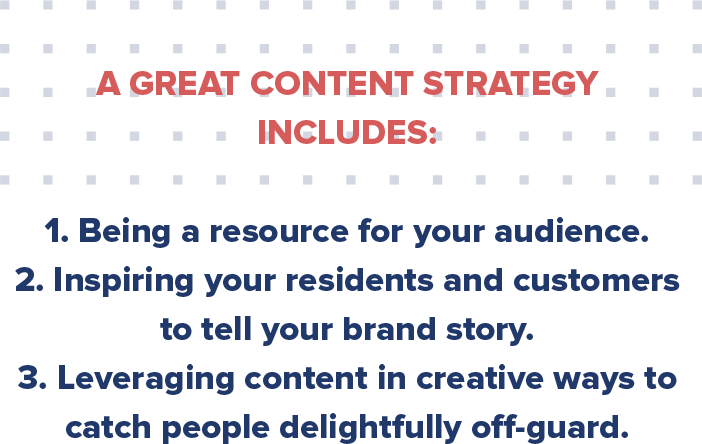
3. Using inbound multifamily marketing to guide your content
The solution to consistency is inbound multifamily marketing, a modern method that equips you to create content that drives buyer personas through your marketing funnel. This methodology will help guide your content marketing plan, expanding the awareness, consideration, and decision stages into four more specific stages: attract, convert, close, and delight.
Attract
The attract stage is about building awareness and creating content that turns strangers into visitors. Thus, you should primarily focus on blogs, social media, and white pages. The goal is to provide solutions to your persona’s problems.
Convert
This stage is about converting visitors into multifamily leads. The type of content you are producing would be in the form of a call-to-action (CTA) or landing page. Create gated offers where viewers must provide minimal information valuable to your business (email, zip code, etc.). For example, offers include infographics, fact sheets, eBooks, and how-to guides.
Close
In the close stage, your strategy should be all about turning leads into customers. In this stage, you should focus on your CRM, email, and workflows. It’s important to speak their language, meet their needs, and seal the deal.
Delight
In the delight stage, you will continue to provide value and show you care about your customers. In turn, they will become advocates and promoters for your business. Through social monitoring and surveys, you can see how satisfied your residents are; if there is a problem, you can address it quickly. Happy customers are your best advocates for attracting new leads.
Unlocking Success with Targeted Content Marketing
Recognizing the intricate nuances of these stages is pivotal for a successful marketing plan. By harnessing the power of content creation, you can navigate these phases with precision, ensuring your multifamily marketing campaigns align perfectly with your audience’s evolving needs. This systematic, step-by-step approach enhances the relevancy of each piece of content and amplifies its impact.
Ultimately, crafting the ideal material for the right context will position you as an authoritative figure in your industry, driving leads and fostering lasting relationships.

Leveraging Demographics for Building an Effective Multifamily Marketing Strategy
Multifamily marketing is not just about promoting products and services; it’s about connecting with your audience. And to do that, you need to understand who your audience is.
Demographic marketing is tailoring your multifamily marketing efforts to specific groups of people based on age, gender, income, education level, and other characteristics. When you understand your audience, you can create campaigns that resonate with them, speak their language, and address their specific needs and desires. In this era of information overload, it’s more important than ever to cut through the noise and grab the attention of your demographic target market.
Demographic marketing is a powerful tool that can help you do just that. By understanding who your audience is and what they want, you can create campaigns that are not only effective but also memorable and engaging.
So let’s take a closer look at the art of demographic marketing and how you can use it to connect with your audience and drive business success.
Understanding Your Demographic Target Market
Understanding your audience is critical to the success of your property marketing campaigns. You need to know your target audience, what they want, and what motivates them. Demographic marketing allows you to create campaigns that speak directly to your audience and address their needs and desires. The more you know about your audience, the better you can tailor your campaigns to them.
Demographic marketing can also help you identify new opportunities. Analyzing data allows you to identify trends and patterns that may not be immediately apparent. For example, you may discover that a particular demographic target market is underserved in your industry and create a campaign specifically targeting that group.
Ultimately, understanding your audience helps you create more effective campaigns. When you know your audience, you can create messaging that resonates with them, choose the right multifamily marketing channels, and optimize your campaigns for maximum impact.
Gathering Data on Your Target Audience
The first step in demographic marketing is to gather data on your audience. There are many ways to do this, including surveys, interviews, focus groups, and online research. The key is to gather as much data as possible to get a comprehensive understanding of your audience.
One of the most effective ways to gather data is through surveys. Surveys allow you to ask specific questions and get quantitative data to analyze. You can also use surveys to gather qualitative data by asking open-ended questions and allowing respondents to provide detailed responses.
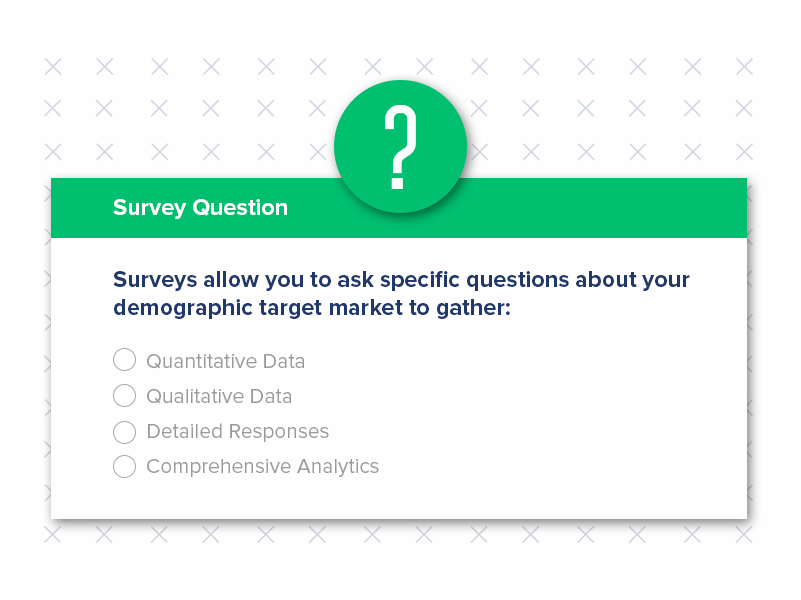
Another way to gather data is through online research. Many online tools and resources allow you to gather multifamily marketing data on your demographic target market. For example, you can use Google Analytics to gather data on your website visitors, including their age, gender, and location.
Analyzing and Interpreting Demographic Data
Once you have gathered data on your target audience, the next step is to analyze and interpret that data. This involves looking for patterns and trends that can help you understand your audience better.
One way to analyze data is to create charts and graphs to help you identify trends and patterns that may not be immediately apparent when looking at raw data. For example, you may discover that a particular age group is more likely to rent at your properties than others or that people with higher income levels are more likely to use your services than those with lower income levels.
Let’s take a closer look at each demographic group you’ll want to analyze:
1. Gender
Women and men think and react differently to certain things, but even more base level, they use the internet entirely differently. While men have gradually caught up with women in overall social media usage, there are differences in platform usage.
Women are likelier to spend time on Facebook, Pinterest, or Instagram, while men prefer forum-based social channels like Reddit. In e-commerce, men and women differ in how they search, with men searching by product while women searching by brand.
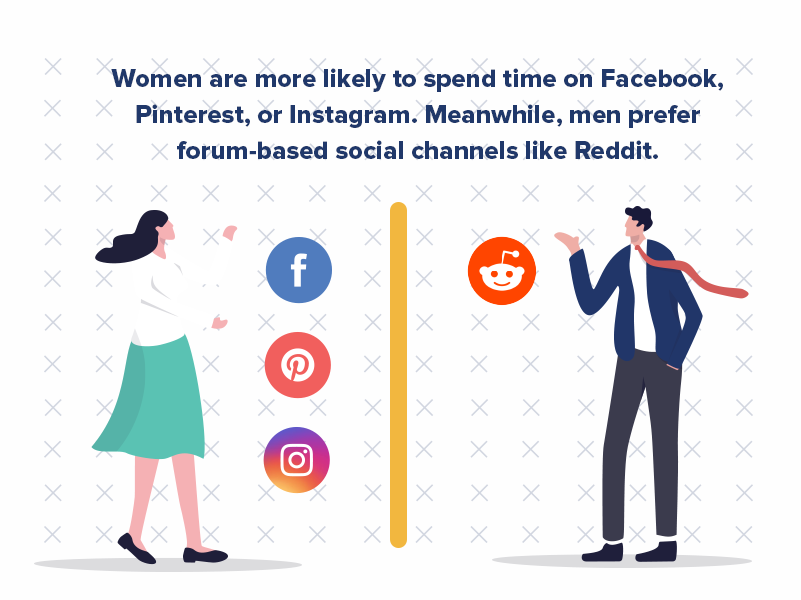
Knowing these key differences in usage patterns can greatly alter your marketing strategy. Targeting moms? Place ads on Facebook and post on Pinterest. Going after single young men? Post your blogs to a relevant subreddit.
2. Age
Baby boomers are online, but not to the extent of younger generations, and certainly not in the same places. Only 57% of Americans 65+ are online, as opposed to 93% of adults aged 30-49. Boomers and older Americans spend the most time checking their email. Meanwhile, younger generations split their time between social media, shopping online, and researching products.
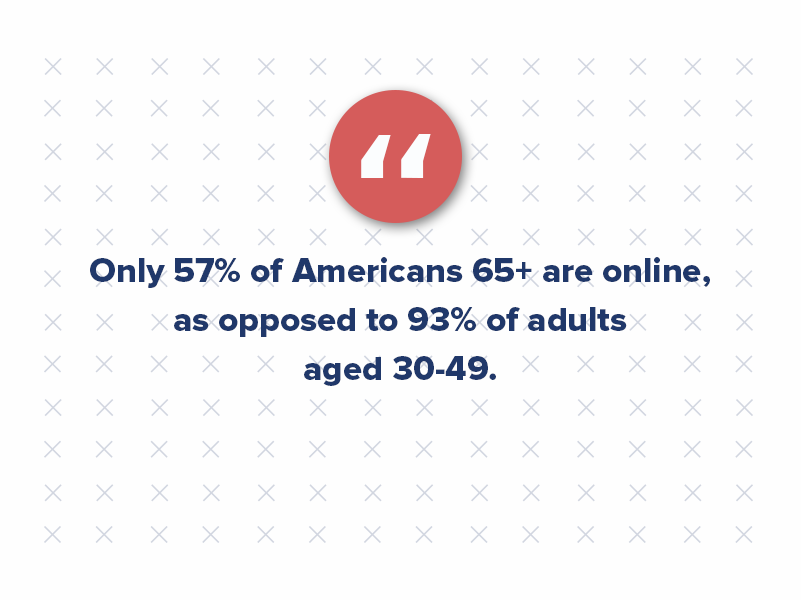
Keeping that in mind, a boomer seeking an active adult community might appreciate a newsletter on your offerings. A millennial seeking high-rise living might prefer a tweet.
3. Income
While internet browsing gaps between people of different incomes have narrowed, this information is still important for marketers. If you’re offering a tiered service, this data can help you better target the appropriate range to the appropriate person.
Why is this important? Because you wouldn’t want to alienate a customer who thinks a product may be out of their price range when they see the higher-end price.
4. Location
This can mean country, region, or even if someone is living in an urban or rural environment. While country and lifestyle have some effect on internet usage, the reason this multifamily marketing demographic is most important has much more to do with knowing and understanding your market.
Someone in an urban environment probably won’t need an industrial-grade sitting lawnmower. Likewise, people in New York City probably don’t want to see information about car accessories. Knowing a person’s location can also help ensure that any written content sent to them matches terms to their colloquial knowledge.
For example, using “pop” vs. “soda” or “coke” depending on where in the U.S. you’re from or ensuring that they’re not seeing deals that don’t pertain to them at their location (e.g., some insurance companies don’t operate in every state).
So, you’ve gathered your basic marketing demographics and are ready to start building your multifamily marketing strategy…
Hold up a second.
There’s more to it than that. While all this information is certainly a starting point, it’s important to take it deeper. In digital multifamily marketing, we call the amalgamation of this information a buyer persona — the typical person who might engage with your product.
Creating Buyer Personas
One of the most effective ways to use demographic data is to create buyer personas. Buyer personas are fictional representations of your ideal customers based on demographic data, behavior patterns, motivations, and goals.
Creating buyer personas helps you understand your audience better and create campaigns that resonate with them. For example, if you discover that a significant portion of your audience comprises millennials, you can create a buyer persona representing a typical millennial customer. This persona can guide your messaging, multifamily marketing channels, and campaign optimization.
Crafting Targeted Messaging
Once you have created buyer personas, the next step is to craft targeted messaging that speaks directly to your audience. This involves using language and imagery that resonates with your audience and addresses their needs and desires.
For example, if your audience is primarily women, you may want to use language and imagery that is more feminine in your campaigns. You may also want to focus on topics more relevant to women, such as health and wellness.
Targeted messaging can also help you stand out from your competitors. By crafting messages that speak directly to your audience, you can differentiate yourself from other brands and create a stronger connection with your customers.
Choosing the Right Marketing Channels
Different demographic groups may respond better to different multifamily marketing channels, so choosing the most effective for your target audience is important.
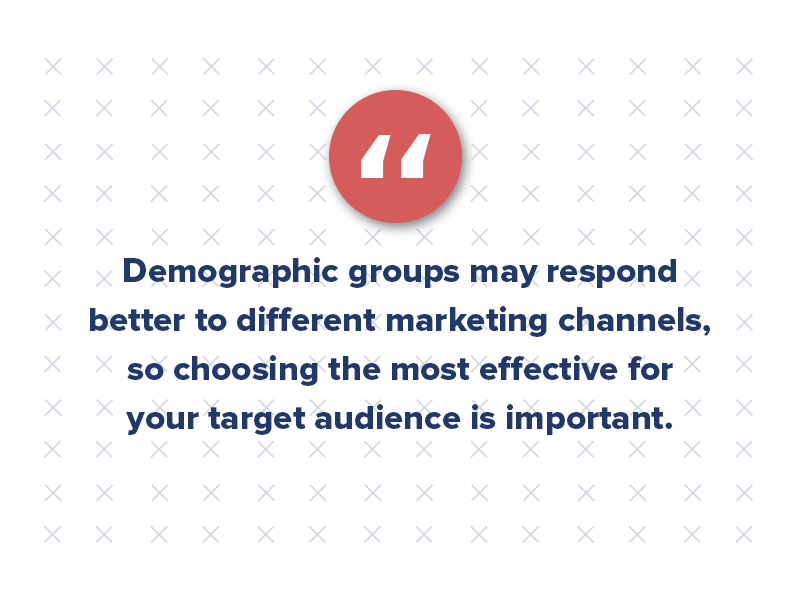
For example, if your target audience is primarily millennials and Gen Z, you may want to focus on social media marketing as they are more likely to use social media than other age groups.
You may also want to consider other marketing channels, such as email marketing, content marketing, and influencer marketing. The key is choosing the most effective channels for your target audience and aligning them with your overall marketing strategy.
Testing and Optimizing Your Campaigns
Testing and optimizing your campaigns is critical to their success. This involves continually monitoring and adjusting your campaigns based on their performance.
One way to test and optimize your campaigns is to use A/B testing. A/B testing involves creating two versions of your campaign and testing them against each other to see which performs better. This can help you identify the most effective messaging, design, or marketing channel for your target audience.
You can also use data analysis to optimize your campaigns. By continually monitoring your campaigns and analyzing the data, you can identify areas for improvement and make adjustments to improve their performance.
Common Mistakes to Avoid in Demographic Marketing
There are several common mistakes to avoid when it comes to demographic marketing. One of the most significant mistakes is assuming that all members of a particular demographic group are the same. This can lead to too broad campaigns that don’t speak directly to your audience.
Another mistake is relying too heavily on demographic data. While demographic data is critical to understanding your audience, it’s important to remember that individuals are complex and multifaceted. When crafting your campaigns, you need to consider other factors, such as behavior patterns and motivations.
Tools and Resources for Demographic Marketing
There are many tools and resources available to help you with demographic marketing. Social media platforms like Facebook and Instagram allow you to target specific demographic groups with your ads. Google Analytics provides valuable data on your website visitors, including their age, gender, and location.
You can also use market research and data analytics companies to gather and analyze data on your target audience. These companies can provide insights and recommendations to help you create more effective campaigns.
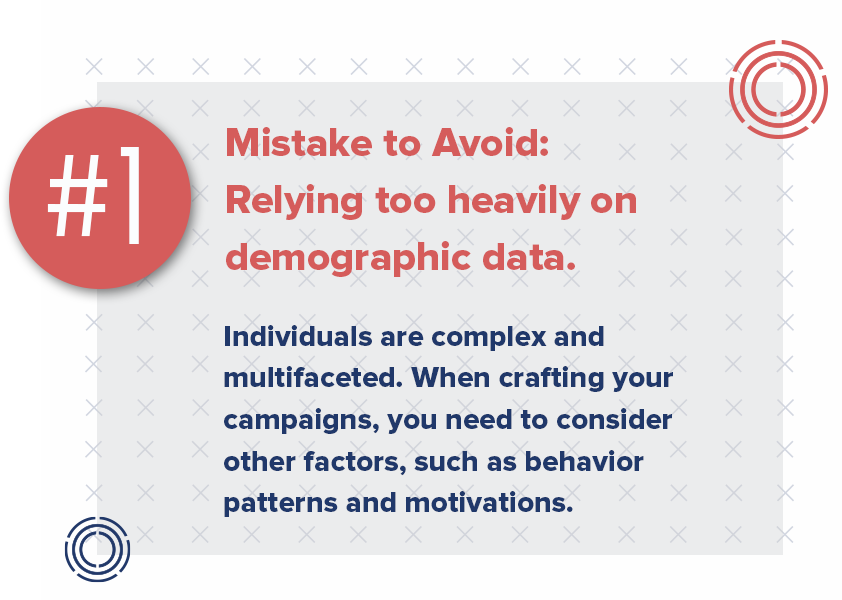
Driving Business Success With Demographic Marketing
Demographic marketing is a powerful tool to help you connect with your audience and drive business success. By understanding your audience and tailoring your campaigns to their specific needs and desires, you can create messaging that resonates with them and stands out from your competitors.
Remember to gather as much data as possible and create buyer personas, then continually test and optimize your campaigns. With these strategies, you can create campaigns that are not only effective but also memorable and engaging.
It’s Time to Take Digital Multifamily Marketing Seriously
Most digital marketers can probably relate to this social situation: Someone asks what you do for a living. After explaining that you work in multifamily digital marketing, the inquisitor follows up with some variation: “So, you play around on Facebook all day?”

Social media for multifamily vendors and developments, in particular, gets a bad reputation, with some business owners refusing even to acknowledge social platforms as legitimate marketing channels.
But if you think digital marketing is just fluff and noise, you are missing out on low-cost campaigns with great returns on investment that traditional marketing cannot compete with. Most businesses fail to realize that digital marketing offers more measurable value than traditional methods.
How a Company Generated $2M From One Blog
Over the years, blogging has transformed from a forum for teenagers into an affordable multifamily lead generation tool. To understand how this transformation occurred, let’s first examine how the internet has changed consumer behavior.
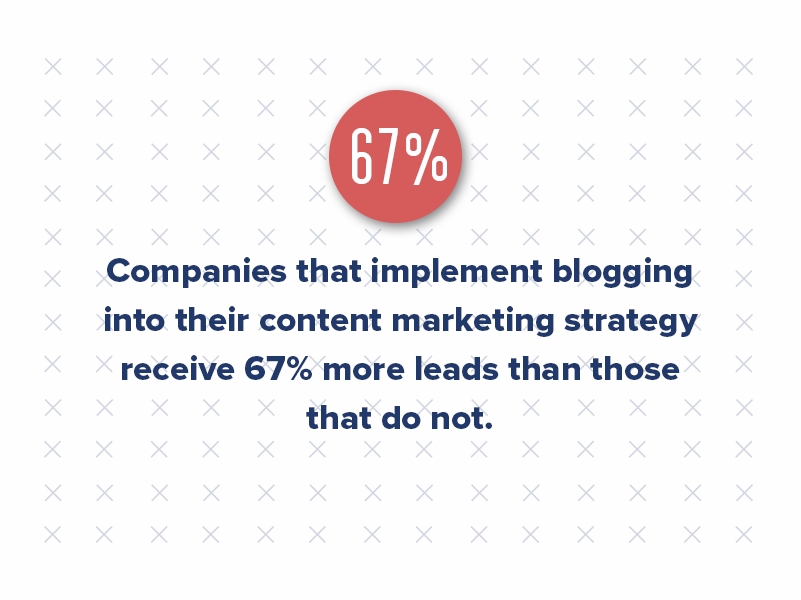
With a digital information repository at your fingertips, today’s consumers are more educated than ever. Gone are the days of visiting a store to speak to an expert or asking neighbors for referrals. Everything from pricing to reviews is found with a simple search.
No matter what industry or consumers you serve, customers have questions, and you can guess where they go for their answers — Google. So, how can you take advantage of this? By answering those questions on your company’s blog or FAQ page.
Marcus Sheridan, one of the earliest content marketing proponents, generated $2 million for River Pool & Spas when he published a blog post on the company’s website answering a simple question: “How much does a fiberglass pool cost?”
What did the blog post cost him? A half-hour of his time and maybe some web analytics tools? We’ll take that ROI.
According to Tech Client, businesses have a 434% higher chance of a high ranking on search engines if they feature blogs as part of their website. Additionally, HubSpot found that companies that implement blogging into their content marketing strategy receive 67% more leads than those that do not.
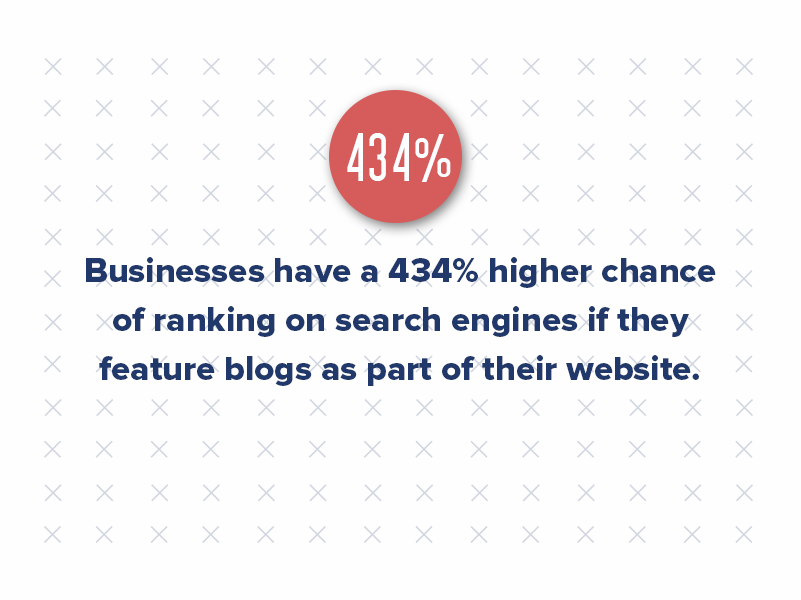
Content marketing might seem pretty straightforward, but like any marketing campaign, it is important to have a strategy. For most businesses, you are not blogging just to blog; you create content to drive your marketing funnel.
Social Media’s Biggest Value-Add for Business
Multifamily owners often ask, “Is social media a legitimate way to generate multifamily leads?” But those owners might be asking the wrong question.
The value of social media is not measured in leads, but rather, it is measured through customer experience. According to Forrester data, a relationship exists between customer experience and stock price. People are willing to pay a premium cost for the experience with a brand.
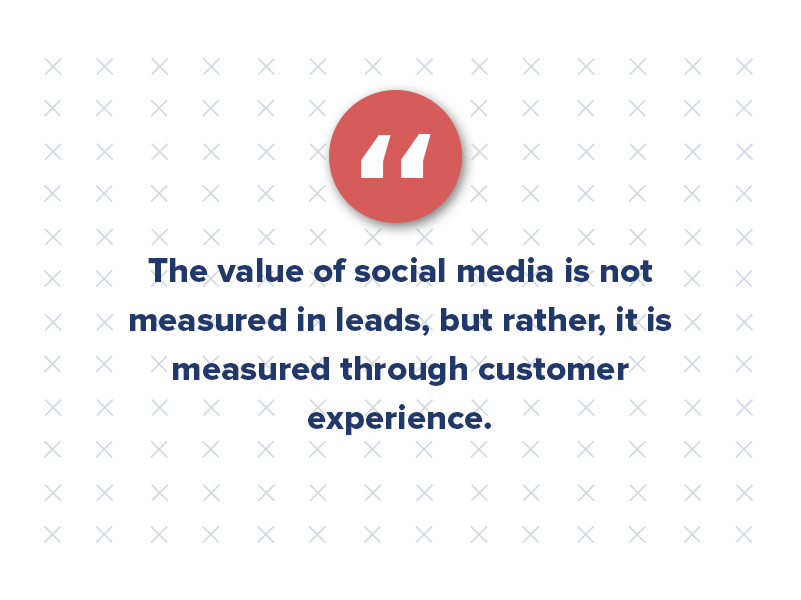
Additionally, improving customer experience can save your company big bucks. In fact, Sprint saves $1.7 billion each year by determining and mitigating the root cause of customer dissatisfaction from calls made to its contact center.
And as it turns out, social media is crucial to improving customer experience. The internet allows word-of-mouth communication to spread easier than ever, both positive and negative.
In the multifamily industry, for example, negative commentary from residents is commonly found across social media and online review sites such as Yelp, Twitter, and Google business pages. Residents who are frustrated with a property’s maintenance issues or poor customer service often express those feelings publicly online. How a multifamily property responds will determine how a negative comment affects your business.
However, each part of your marketing strategy should fit into one cohesive piece. Your website, social media presence, user experience, customer experience, etc., should work harmoniously to establish a successful inbound marketing plan.
You Must Talk Marketing ROI (4 Key Takeaways)
As marketers, we are constantly faced with the battle of justifying ourselves and our multifamily marketing agency’s role in a company’s ROI. We must always find ways to prove to CEOs that marketing contributes to the bottom line.
But how?
Here are 4 ways to convince multifamily owners and CEOS that marketing ROI matters.
1. Be relevant — set SMART goals.
Do you find yourself constantly sharing statistics that discuss retweets, follows, visits to the website, etc.?
These stats are important, but if you have not established true goals and understand how and if your work is contributing to the bottom line, STOP IT! It’s time to set up your SMART goals, communicate with your sales team, and start being relevant to what is most important to the CEO and company: ROI.
2. Play offense, not defense.
Believe it or not, about 69% of CEOs believe that marketing is a waste of time, money, and resources. To stay on the offense, you must clearly define your goals, ensure that sales and marketing are happy, and discuss the purpose behind your goals.
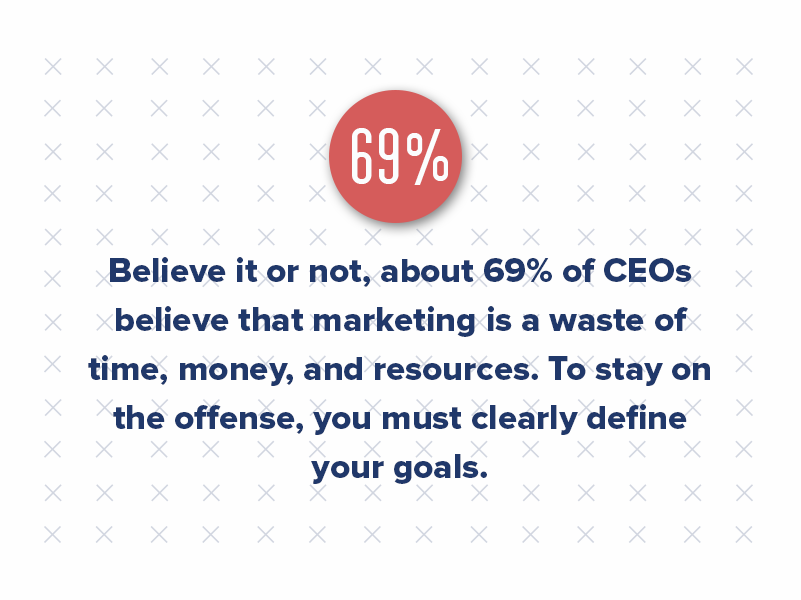
3. Always go after the 3 Hs.
- Head – Explain your plan of action. Defend your strategies with case studies, numbers, etc. Win over your team with proof!
- Heart – If people aren’t truly vested in your idea with their heart, you will lose them. Find out what’s important to them and how to tie your new goals to theirs.
- Hands – Now that you’ve won over your team, you’ve got to get them to get back to (or start) work! Play out those call-to-actions.
4. Prepare to show your medal.
In business, you will fight many battles. You will be criticized and put through the wringer. But, at the end, these obstacles will refine your character — just like a medal has to go through fire to be reshaped and altered.
Take risks and be the change that will keep your organization moving forward.

Generative AI vs. Human Writers: Why You Need BOTH in Your Strategy
By now, you’ve likely heard about OpenAI’s ChatGPT and other chatbot artificial intelligence tools.
And if you haven’t heard of these AI writing tools yet, settle in and don’t skim over the good parts of this blog because this one is important.
Generative AI has taken the marketing world by storm. With advancements in natural language processing (NLP) and machine learning, AI copywriting has become an increasingly popular tool for any business to interact with its customers — and the multifamily market is no exception to this growing trend.
AI-powered writing tools, in particular, are a leading example of how generative AI is changing the marketing world. But while these tools can automate some multifamily marketing processes, human writers and editors are still essential.
Why? ChatGPT might be revolutionizing how you handle content marketing, but did you know it isn’t always factual? Did you know some generative AI content is considered plagiarism?
We ALL have our limits, and that includes AI writing tools. We found those limits and think sharing them is important so you can utilize ChatGPT (and similar tools) to support your apartment marketing efforts the RIGHT way.

What is ChatGPT?
ChatGPT stands for “Chat Generated Pre-Trained Transformer” and is an AI-powered chatbot that utilizes an NLP model developed by OpenAI. It uses machine learning algorithms to analyze vast amounts of data to generate content that reads as if a human wrote it.
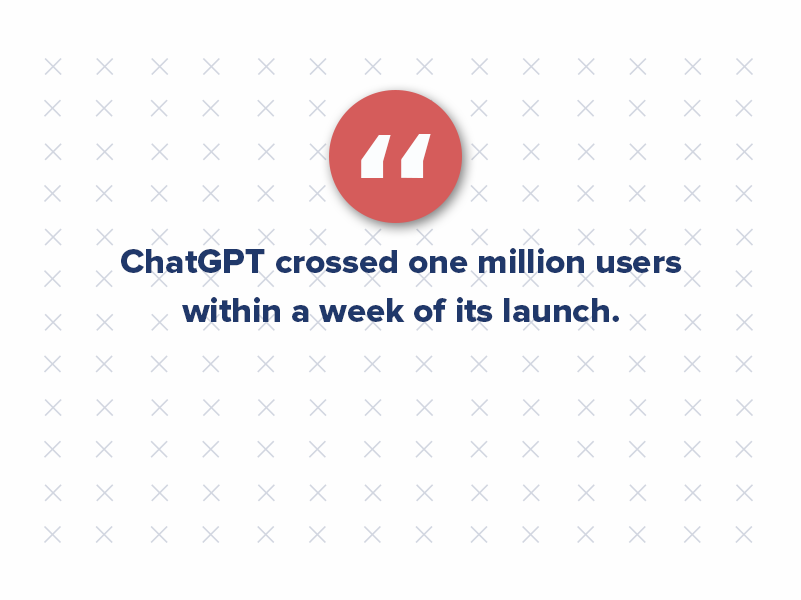
Since ChatGPT launched in November 2022, the world hasn’t stopped talking about it. There are many use cases and ideas, but we haven’t seen enough comprehensive use cases to leverage it in multifamily marketing.
Generative AI Tools and Industry Growth
The generative AI market is booming, with over 2,000 tools now available to help businesses create content, streamline workflows, and innovate across industries. The rapid expansion of this market is fueled by growing interest in AI-driven solutions and substantial investment. In fact, between 2022 and 2023, total investment in generative AI skyrocketed by an astounding 407%. Let’s explore some of the leading tools driving this transformation:
- ChatGPT (OpenAI): A widely used conversational AI tool capable of generating text, answering queries, and assisting with creative projects.
- Google Bard: An advanced conversational AI by Google that excels in generating detailed responses and explanations.
- Gemini (Google DeepMind): Combines generative AI capabilities with Google’s vast knowledge graph for nuanced and reliable responses.
- AlphaCode (DeepMind): A coding-specific AI designed to assist developers in writing and debugging software.
- GitHub Copilot: Powered by OpenAI, this tool enhances coding efficiency by providing contextual suggestions and code snippets.
- Peppertype: Offers content templates for writing articles, meta descriptions, and marketing emails.
- Rytr: Creates SEO-optimized titles, blog posts, emails, and advertisements with a focus on ease of use.
- Jasper: A content generator tailored for marketing teams, featuring multi-language support, collaboration tools, and content templates.
- Copy.ai: Focused on content marketing, this tool generates blog posts, social media updates, and email campaigns.
- MidJourney: A leading AI tool for generating stunning visual designs and artwork.
- Stability AI: Known for developing tools like Stable Diffusion, specializing in high-quality image generation.
A Market on the Rise
The generative AI industry is experiencing unprecedented growth, attracting interest from businesses across sectors. From crafting marketing content to automating repetitive tasks, these tools offer transformative potential. With investment levels surging and innovation accelerating, generative AI is poised to reshape how we approach creativity, productivity, and problem-solving.
Whether you’re a marketer, developer, or business leader, understanding and leveraging generative AI tools can provide a significant edge in today’s competitive landscape. As the market evolves, staying informed and experimenting with these technologies will be key to unlocking their full potential.
ChatGPT by the numbers
- On March 14, 2023, OpenAI launched GPT-4 technology in the ChatGPT Plus Plan, which allows it to generate 25,000+ words in output. As well the model understands 26 languages.
- ChatGPT reached one million users within a week of its launch and 57 million monthly users in the first month.
- ChatGPT crossed the 100 million users milestone in January 2023.
- 13 million individual active users visited ChatGPT per day as of January 2023.
- Microsoft invested $10 billion in OpenAI, gaining 46% of the company’s stake. OpenAI received $ 1 billion from Microsoft in the initial stages of development.
- ChatGPT owner OpenAI predicts that by the end of 2024, they will generate revenue of $1 billion. $200 million in revenue is expected by the end of 2023.
The benefits of AI-powered writing tools
The primary advantage of ChatGPT is its ability to produce large volumes of content quickly and efficiently. This makes it an ideal tool for marketers and content creators who must quickly produce a high content volume. Additionally, ChatGPT can provide marketers with fresh ideas and perspectives on a given topic, helping them to create more engaging and compelling content.
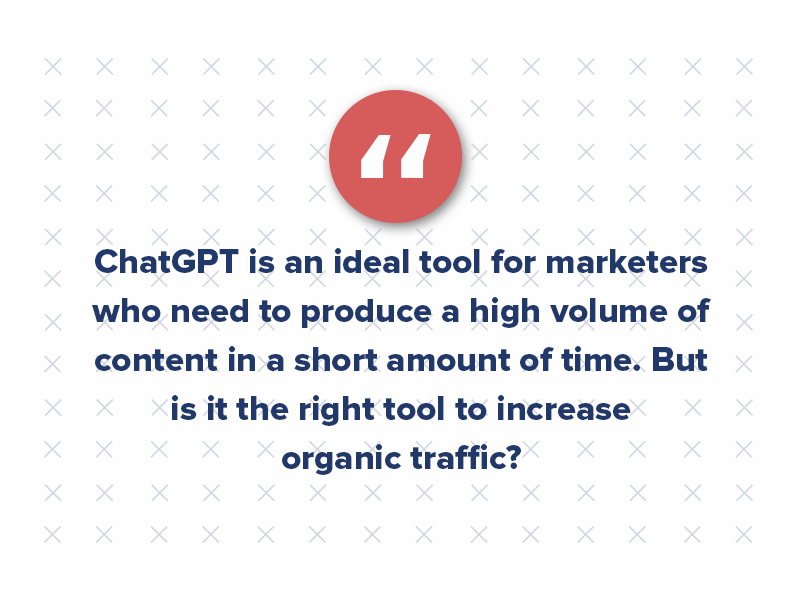
Regarding blog writing and marketing, generative AI is an excellent tool for generating ideas and starting the writing process. By providing a prompt, such as a topic or a keyword, ChatGPT can quickly generate several paragraphs of text that can serve as a jumping-off point for further refinement by a human writer or editor.
Moreover, ChatGPT can help marketers create optimized content for search engines, which is essential for driving website traffic. ChatGPT can suggest keywords and phrases that can improve a blog’s search engine ranking by analyzing search queries and content related to a given topic.
7 limitations of AI in digital multifamily marketing
While generative AI offers several benefits, it is important to understand its limitations. ChatGPT’s writing is generated based on algorithms and statistical patterns, so it may not always capture the nuance or tone that a human writer could convey. ChatGPT also has limited knowledge of cultural and contextual factors that may impact how a specific audience receives content.
Additionally, ChatGPT may struggle to generate content for complex or technical topics requiring high expertise. In these cases, relying on a human writer or editor with the necessary knowledge and experience to create high-quality content may be more effective.

1. AI lacks creativity and personalization.
Despite the many advantages of ChatGPT, human writers and editors are still necessary in today’s marketing world. Human writers bring a level of creativity and personalization to their writing that AI-powered tools cannot match. They can inject personality and voice into their writing that resonates with their audience and helps to build a connection with them.
Furthermore, human writers and editors can provide a level of quality control that AI-powered tools cannot match. They can review content generated by ChatGPT to ensure that it is accurate, engaging, and error-free. They can also ensure that the tone and style of the writing are consistent with the brand’s voice and values.
When you compare content written by AI vs. a human, AI doesn’t have a lot of creativity or personality. Take the following paragraphs as an example. One was generated by AI, and the other by me (the Manager of Content at Criterion.B). I wrote a few paragraphs about web design — specifically, the No. 1 mistake marketers make when building or redesigning their websites.
After writing my version of the topic, I asked ChatGPT to “Write a couple of paragraphs about the No. 1 mistake marketers make when building or redesigning a website.”
Here is my take on the results:
I ran both pieces of content through a plagiarism checker. My content had 0% duplicate content. Meanwhile, 5% of the AI-generated content was considered plagiarism.
Additionally, as you can see, my content was much more informal, specific, and personalized. The AI-generated content (while it is good content) is much more formal, structured, and even a little bit stale in comparison.
While it’s not a bad paragraph and could be used in a blog somewhere, imagine an entire blog written using ChatGPT and how it would sound. The AI-generated content is a bit heavier to read, which could lead to a higher bounce rate over time if all your content is AI-generated.
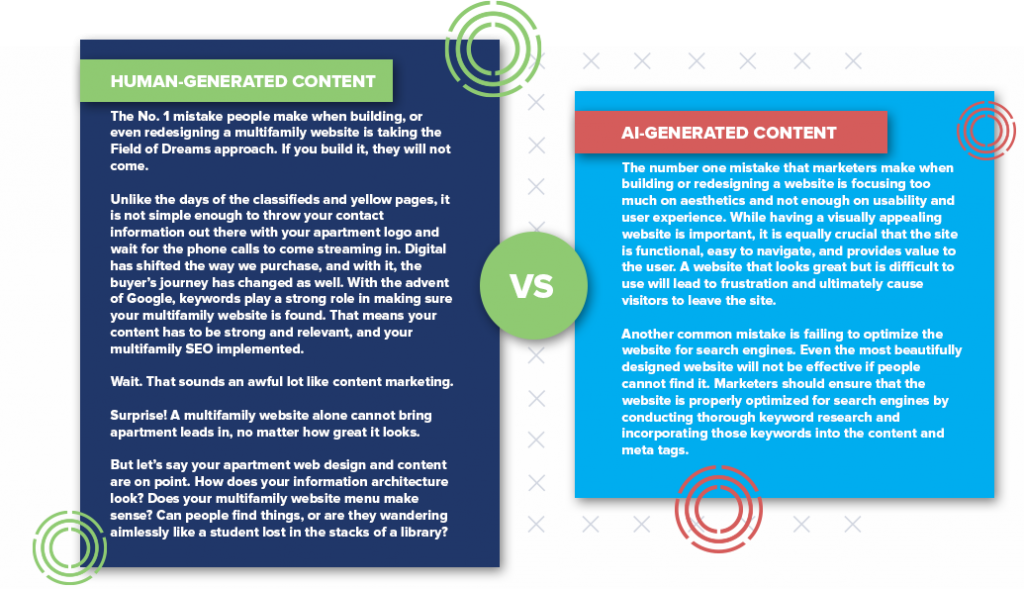
2. AI lacks originality (possible plagiarism alert!)
ChatGPT is not your content creation savior. Sure, it’s powerful and helpful, and maybe the tool will improve significantly in the months and years to come. But for now: relying on ChatGPT for ALL of your content is a disaster waiting to happen.
AI learns from existing content on the web, so it replicates what is already out there. This means it could be a literal copy of something else online. (See the above example where the AI-generated content had 5% plagiarized content.)
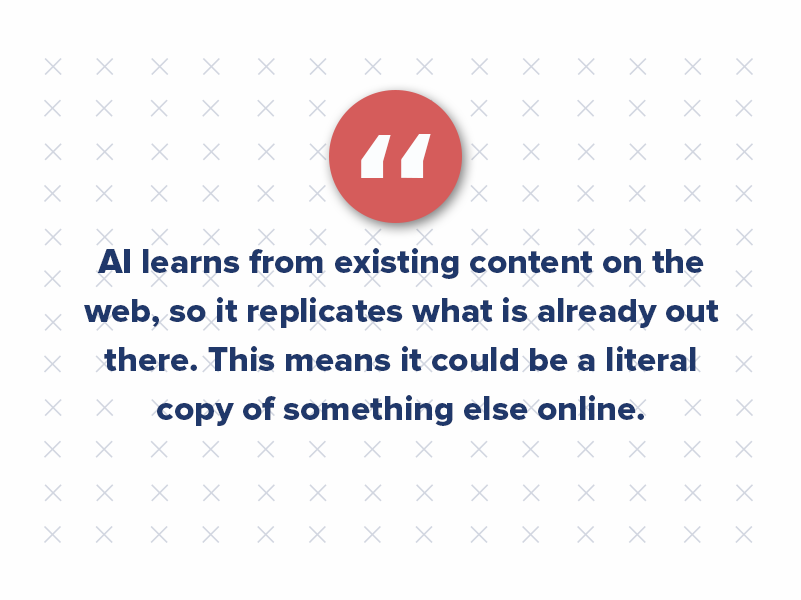
3. AI utilizes an outdated learning model.
Generative AI cannot always provide the correct answers. Did you know that some content from ChatGPT and other writing tools is inaccurate information? This is because AI pulls data from top ranking articles or from what it can find online, so the stats you might see in your content might be inaccurate, outdated, and likely inaccurate. Think about the disclaimer provided in all generative AI results about how it’s “experimental” and users should always fact-check the results.
4. AI lacks emotional intelligence.
AI may be able to simulate human writing, but it lacks emotional intelligence. Human writers and editors can use their emotional intelligence to understand customer needs and write specific content centered around those needs. Emotional intelligence is crucial to successful multifamily marketing, as customers are more likely to engage with a business that understands their needs and values.
5. AI does not know your brand voice.
Every business has a unique brand voice and tone representing its personality and values. Human writers and editors are essential for maintaining and developing a consistent brand voice across all apartment marketing channels. Artificial intelligence tools may be able to write blogs, emails, and website content, but they cannot understand your authentic brand voice. ChatGPT has a lack of context, so AI is not recommended to be used by businesses. The bottom line: Generative AI does not know your business like you do.
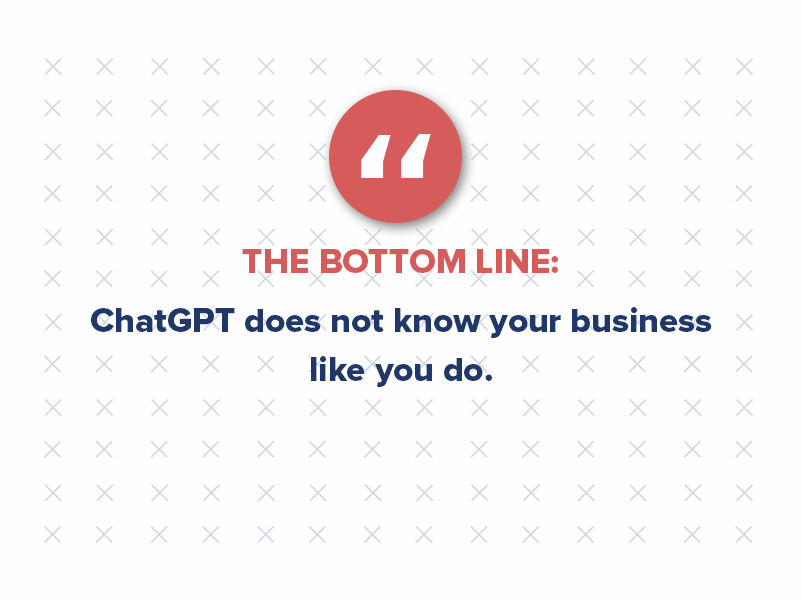
6. AI content has errors.
We are all human (except AI, ha!) and make mistakes. But when you rely on an AI writing tool to generate content for you, you expect it to be nearly flawless. Or, at the very least, free from major errors.
I’ve been testing ChatGPT and other writing tools like Jasper.ai for several months and discovered the content is riddled with errors. Everything from run-on sentences and passive writing to missing punctuation and duplicate content.
Consider the below example. Jasper.ai generated the first paragraph and includes a variety of grammatical errors. While these errors are insignificant, they are still errors that would not be there had human-generated content. Then, compare the “After” paragraph, which is the same AI-generated content that was then edited by me (an actual human editor). Notice the difference in the paragraph’s flow, clarity, and readability.
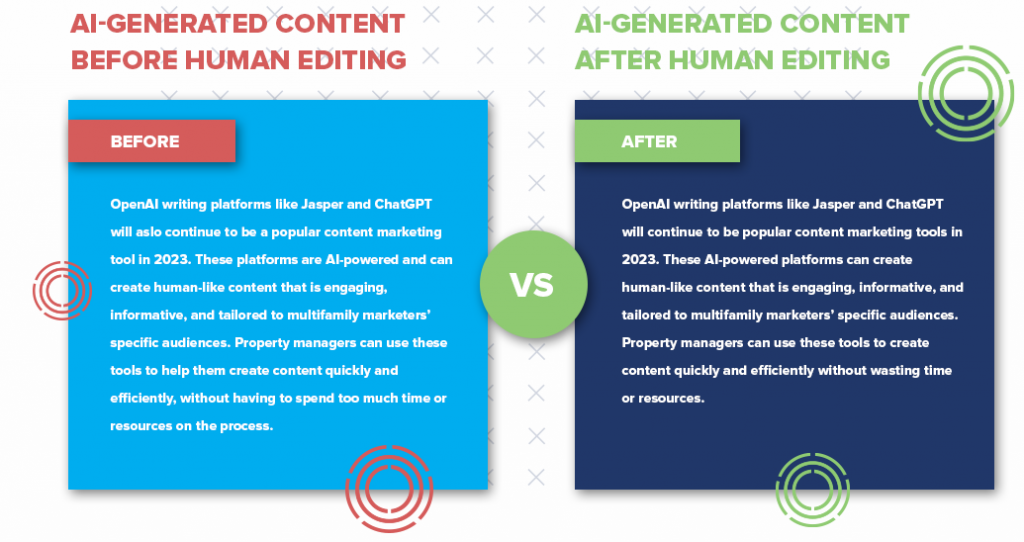
Although Google doesn’t penalize grammar and spelling outright, the bots that scan your content may find it harder to understand what the page or article is about, which could result in lower page rankings and perceived credibility.
7. AI content is not guaranteed to rank well.
Fun fact: Google doesn’t love AI-generated content. Google did release its own AI writing tool, Bard, so the space may change in the coming months and years, but for now, Google can sniff out AI content a mile away.
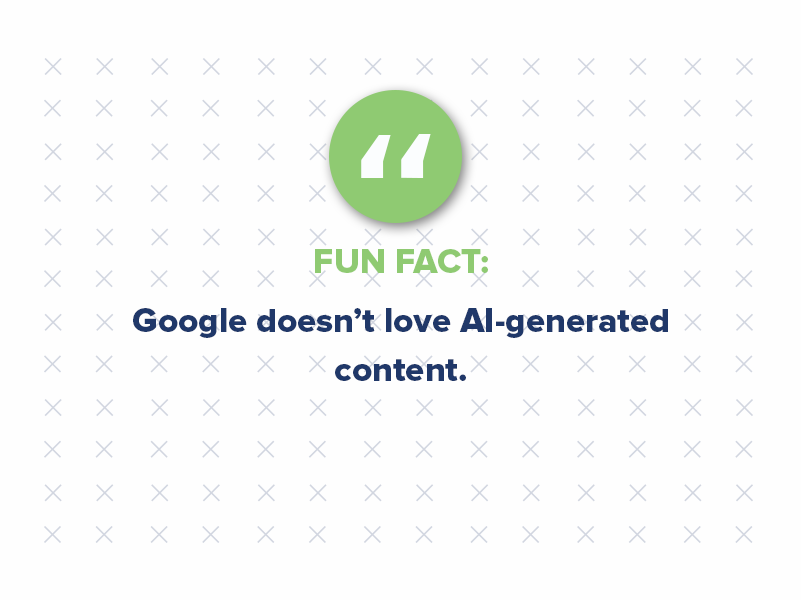
And did you know that Google punishes AI-generated content? That means anything a chatbot spits out will NOT boost your apartment SEO ranking. In fact, it’ll actually hurt it.
How will AI affect search?
Quality still matters over quantity. Just because ChatGPT can help you crank out more content does not mean you will rank well for those pieces. You need an SEO expert to help you rank and strategize effectively.
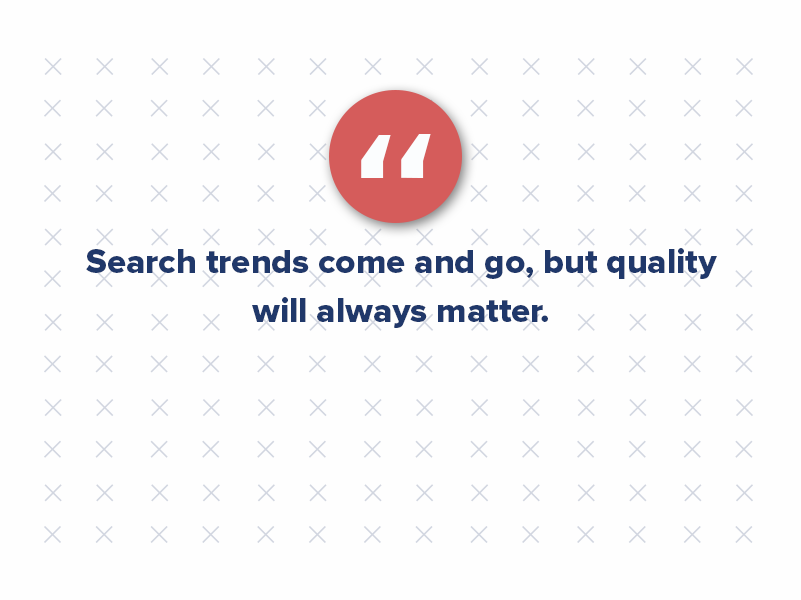
ChatGPT content lacks EEAT (expertise, experience, authoritativeness, and trust). You need this in your content to do well in Google search engine result pages (SERP).
Google provides users with TONS of answers to their queries based on SEO strategies, keywords, backlinks, etc.
A chatbot provides one singular answer. Just one answer. How does the chatbot know the ONE answer to that query? Is bias involved? What if they pulled inaccurate information for the answer? Consider these questions when using ChatGPT, Jasper.ai, Bard, and other tools to help generate answers to your queries and content for your blog.
Will AI replace humans?
No! Remember, ChatGPT requires human editing. Effective apartment marketing requires tapping into the human element, which is something AI can’t do (yet). Natural language processing could change this in the years to come, but for now, ChatGPT is more of a stepping-off point for your content.
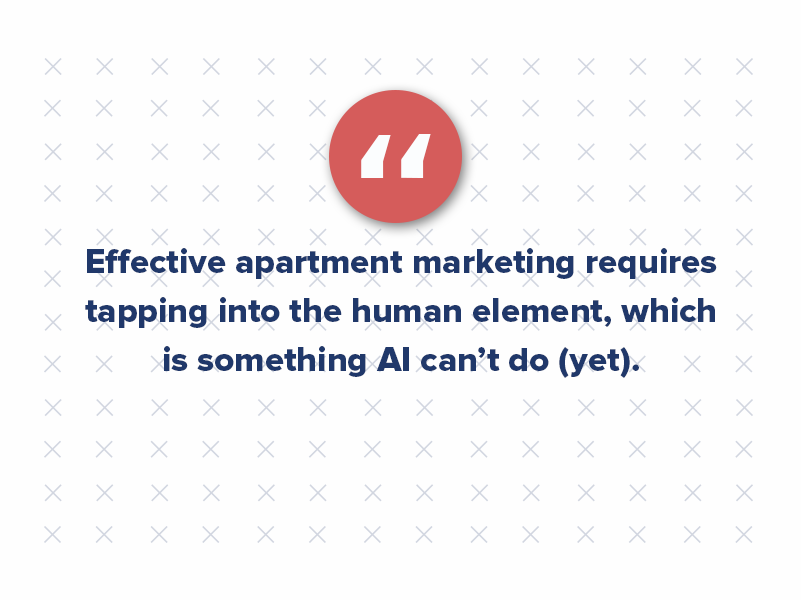
Marketers should harness AI to help batch-create content and save time, then use human editing to refine, hone, and detail the pieces. That’s how you create quality content that resonates. The key is to use AI for what it does best and supplement it with strategic human input.
How to beat your competition at the content marketing game.
So … outdated content, factual errors, plagiarism, and no guarantee of good SEO? That’s not a great recipe for your digital marketing strategy if you ask me.
ChatGPT is an excellent tool to start the writing process, but it should be viewed as a jumping-off point rather than a complete replacement for human writers.

There’s no replacement for human ingenuity. Over the next year or so, AI-generated content will explode. ChatGPT has changed everything, and it’s made everyone (including your competition) think they can pump out a bunch of content without their audience noticing.
But what happens when Google evaluates that content? It will notice the lack of originality. It will read like a robot wrote it — because a robot did! That’s what your competition is going to do. And what’s the best way to compete with your competition? Beat them at the content marketing game!
Want to see the effect the human touch can have on your content? Book a call with Criterion.B now. We’ll get started on your customized strategy and show you how to BEAT your competition with real-life, human-generated content personalized to your business and audience. We’re ready to chat and answer your questions!

Unlocking the Mystery Behind Email Marketing for Apartments
Email marketing is one of the most effective and cost-efficient ways for apartment communities to reach their residents and grow their email lists. Email marketing lets you stay in touch with your residents, keep them informed about special events or promotions, and increase resident loyalty.

It’s also an incredibly valuable tool for engaging potential renters who may be interested in leasing in your community. However, email marketing success depends on various factors, including open rates, click-through rates (CTRs), content quality, email design, subject lines, and more.
In this blog post, we’ll discuss our top email marketing best practices so that you can maximize engagement from your current residents as well as attract new ones.
1. Grow your email subscriber list with lead forms.
Email list growth is key to successful email marketing. You should always use opt-in apartment lead generation forms to encourage people to join your email list. This can be done through various channels, such as email blasts, social media posts, and website CTAs. Additionally, you can work with an email marketing agency that will help you maximize the effectiveness of your campaigns.
The best way to earn a new email is to offer the person something valuable in exchange. For example, an eBook, guide, checklist, or another valuable downloadable offer can be offered in exchange for their email.
Want to see this in action? Check out our CTA button below! You can click the landing page to see how we have this offer presented, along with our lead capture form.
2. Segment your email list.
Another email marketing tip that can be used to increase engagement is segmenting your email list. By creating tailored messages for different audiences within your email list, you can optimize the content of each email to better suit each audience’s needs. This can result in higher open rates and more relevant content being sent out.
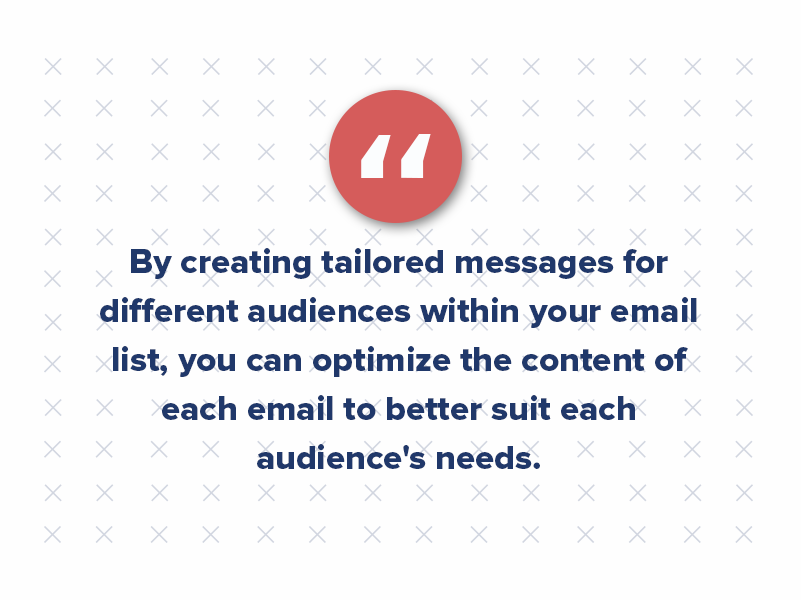
For example, once your email list is large enough, you’ll want to segment the list by current, prospective, engaged, non-engaged, etc.
3. Monitor your email marketing analytics.
Email marketing should be tracked closely to see what is and isn’t working for your email campaigns. You should track metrics such as open rate, click-through rate (CTR), email forwards, and unsubscribes to understand your email campaigns’ performance better.
Statistics show that email marketing continues to be one of the most successful multifamily digital marketing tactics. Email marketing has significantly risen in recent years. According to Campaign Monitor, email open rates have increased by 6% from 2020 to 2021, and email click-through rates increased by 9%. And email open rates in 2022 average 21.5%; typically, open rates between 20% and 40% are viewed as average.
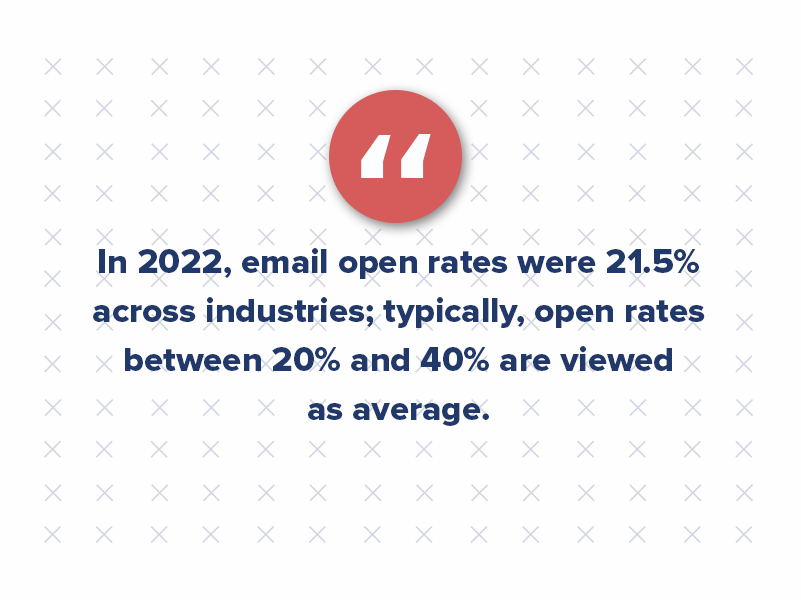
This clearly indicates that email marketing is becoming an increasingly effective way for businesses and apartment communities to reach their residents.
Pay close attention to email open rates to determine the success of your subject lines. To determine your open rate, divide the number of unique opens by the number of emails sent minus those that bounced. Although it’s not always exactly accurate, open rates provide a good gauge of your engagement over time. If your open rate starts to dip, it’s a sign that you need to review your subject lines or sending frequency.
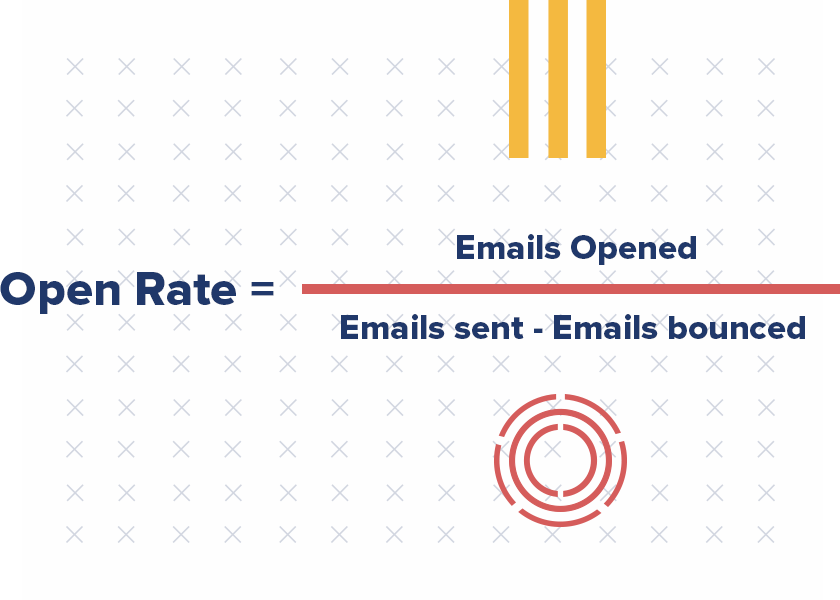
4. Pack your emails with high-quality, relevant content.
Never (and we mean NEVER) send an email to send an email. Writing quality content that resonates with your target audience is essential for email marketing success. Ensure that emails are well written and offer valuable information to readers so they will open them in the first place.
It’s also important to ensure that content is properly displayed on different devices, including mobile phones and tablets since most people now access their emails via their phones.

5. Don’t stress about your email design.
Email design matters too. But not in the way you think it does.
Designing visually appealing emails with engaging images and colors CAN help keep your email list engaged, but you need to determine what is best for your audience.
What we mean by this is that you don’t always need a fancy email design to build, maintain, and grow a successful email campaign. We’ve tested this theory with designed and visually appealing email newsletters vs. a plain text html email we send to our list. In every occurrence, our email open rate and CTR were higher with the plain text email.
Our theory? People are inundated with emails every single day. Emails flood your inbox and the designed sales emails typically end up in the spam folder. Or, if the person opens it, they quickly delete it if something (the content) doesn’t grab their attention immediately.
Html text emails feel and look more personal. We started sending these emails to our list from one team member. It’s sent as a one-on-one email exchange and garners more engagement than a highly designed email.
So, next time you plan your next email campaign, we recommend A/B testing a designed email vs. html text to see what works best for your audience.
6. Subject lines are critical.
First impressions matter and that’s exactly what a subject line is. It’s arguably the most important part of your email and should talk almost as long to perfect the subject line as it does to write the whole email.
Attention-grabbing subject lines will encourage people to open your emails instead of sending them straight to the trash bin. We treat subject lines like a landing page: Keep it straightforward, pique your audience’s interest, and don’t overwhelm your audience.
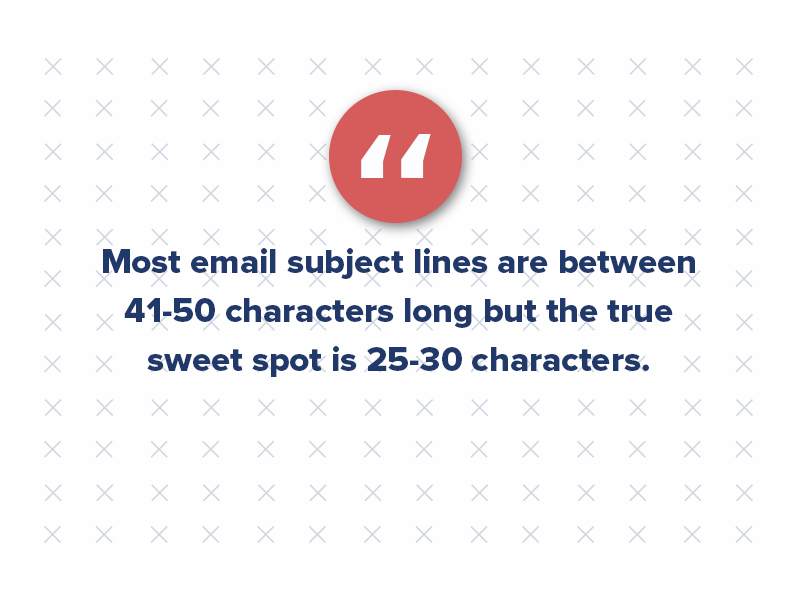
Here are a few things we’ve learned from A/B testing email subject lines:
- 60 characters MAX or no more than 9 words.
- Most email subject lines are 41-50 characters long, but the true sweet spot is 25-30.
- Punctuation is not needed.
- Sentence case is favorable.
- Emojis can be added but they should be done with intention.
- Emojis at the beginning of your subject line tend to perform better than at the end.
Our most popular subject lines:
- 3 keywords for more lease traffic
- 🚨Property SEO mistakes to avoid
- Win Yeti merch in 5 minutes
- Potential renters will love to see THIS
- Are you using this type of ad?
- This will keep leads on your website longer
- Increase open rates with this 1 tip!
After 4 months of A/B testing email subject lines, we’ve increased our overall open rate per email from 10% to 20%. Specifically, our five best-performing subject lines all had an open rate of 25%-30%.
7. Invest in email marketing automation software.
The final tip we suggest when it comes to email marketing is email automation. Automating email campaigns can save apartment communities time and money while also providing a more personalized experience for users. The key here is to provide targeted content at specific times to maximize the impact of your email marketing campaigns.
You can use platforms like Campaign Monitor, MailChimp, SharpSpring, HubSpot, and many more to help you automate your emails. The goal of automation is to make sure no lead is forgotten. You can create email workflows triggered when someone signs up for a property tour, fills out a contact form on your multifamily website, or clicks on a link in one of your email blasts.
Email marketing software will also make tracking your analytics and A/B testing content a breeze.
Get the Most Out of Your Email Campaigns
Email marketing can provide great results for apartment communities — if done correctly. Email offers an incredible opportunity to engage with current residents, attract prospects, and build renter loyalty.
By following email marketing best practices and taking advantage of email tracking data, you can get the most out of your campaigns and see positive outcomes for your property.
How to Convert Apartment Leads Into Leases Using Your CRM
Sales are all about converting apartment leads into residents. And a CRM (customer relationship management) system can be an invaluable tool for making that happen for your property.
You can improve your chances of converting leads into leases by tracking apartment leads and resident interactions. Key features to look for in a CRM include apartment lead management, multifamily email marketing automation, and contact management.

Apartment lead management is important for monitoring prospects and keeping track of their progress. Multifamily email marketing automation can help you nurture leads with automated email campaigns. And contact management can help you keep track of resident interactions and follow up with them effectively.
When it comes to multifamily marketing, these CRM features can be extremely helpful in booking more property tours. By using a CRM system, you can better manage your apartment leads, automate your email multifamily marketing, and keep track of resident interactions. This will all lead to more sales and a higher conversion rate.
That being said, not all CRMs are created equal. Some CRM features are more helpful than others when it comes to conversions.
Here is a closer look at what our team views as the most important CRM features for conversions (and what we use every day in our multifamily marketing efforts!):
1. Customizable lead capture forms
A good CRM will allow you to create custom lead capture forms that fit your needs. This is important because you want to ensure you’re capturing all the information you need from potential customers to follow up with them effectively.
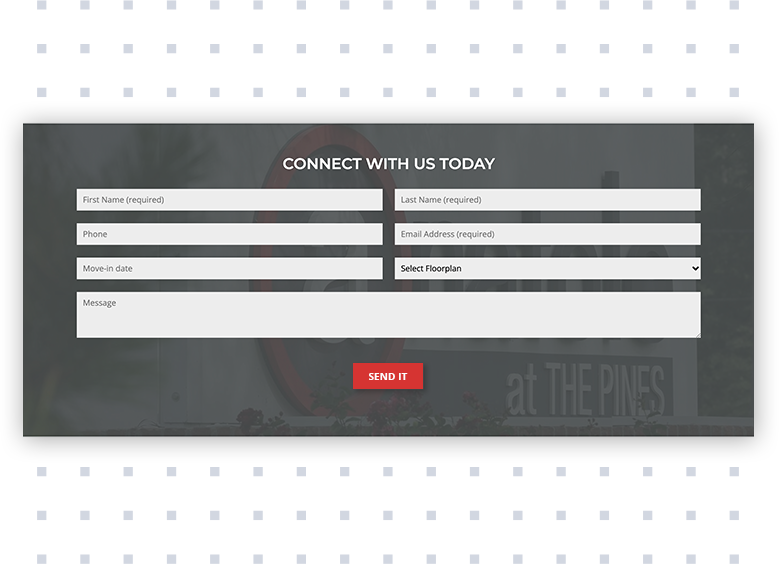
Custom lead capture forms are online forms that allow you to gather leads for your multifamily property. By collecting contact information and other key data points, you can nurture leads through the sales process and ultimately convert them into residents.
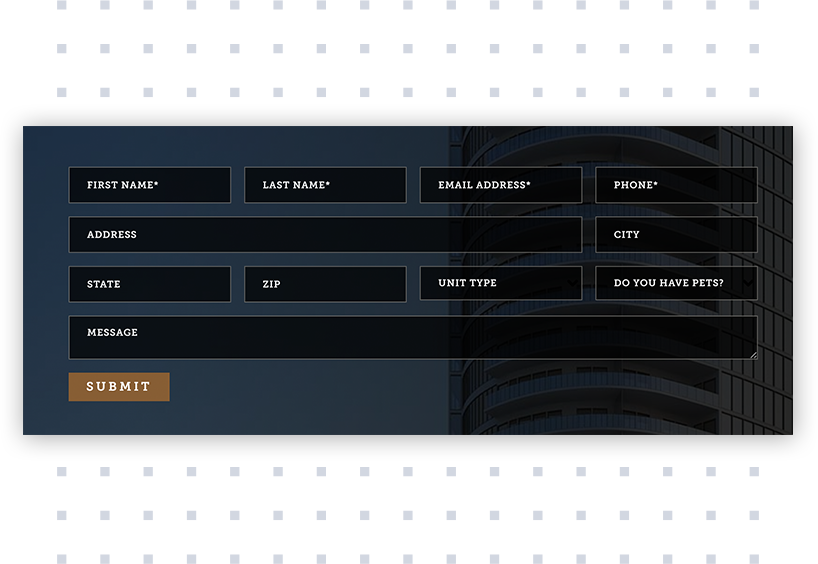
There are several features that can be included on custom lead capture forms, but some of the most important for conversions include the following:
- Property type: By asking leads what type of multifamily property they’re interested in (e.g., apartments, townhomes, etc.), you can ensure that you’re marketing to the right audience.
- Budget: Collecting budget information helps you qualify leads and determine whether they can afford your multifamily property.
- Location: Knowing where your apartment leads are interested in living helps you target your multifamily marketing efforts and ensure that you provide relevant information.
- Contact information: To follow up with leads, you’ll need to collect their contact information (e.g., email address, phone number, etc.).
By including these key data points on your custom lead capture form, you can increase the likelihood of conversion by ensuring that you’re marketing to the right audience and providing relevant information.
2. Lead scoring and grading
A lead scoring system will help you determine the most promising leads, so you can focus your energy on converting them. This is important because it allows you to prioritize your time and resources and increase your chances of making a sale.
If you have access or interest, marketing automation software offers lead scoring to qualify your apartment leads. Lead scoring involves tracking any lead in your CRM across your multifamily website. With lead scoring, you can ascribe value to different blogs or page views, offers or email interactions. When a lead reaches a certain score, decided on by your team, they become sales qualified.
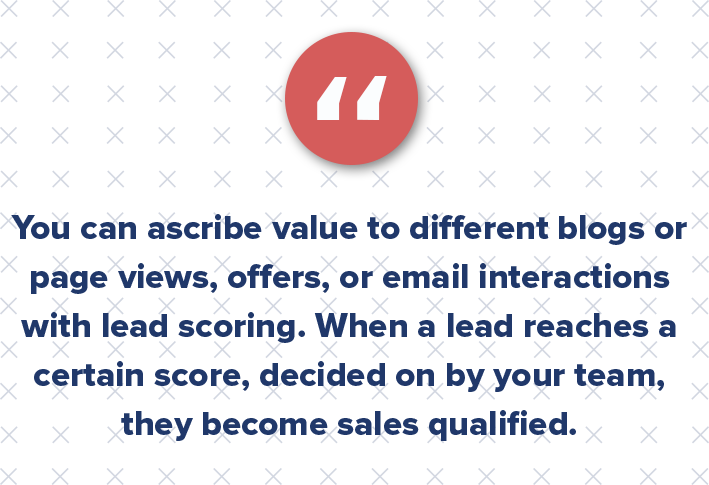
3. Automated follow-up
Automated follow-up is one of the most valuable features a CRM can offer. Once an apartment lead has been captured, it’s important to follow up with them as quickly as possible. An automated follow-up system will ensure no potential sale slips through the cracks. It allows you to set up automatic email or phone reminders to follow up with apartment leads, so you never miss an opportunity to convert them.
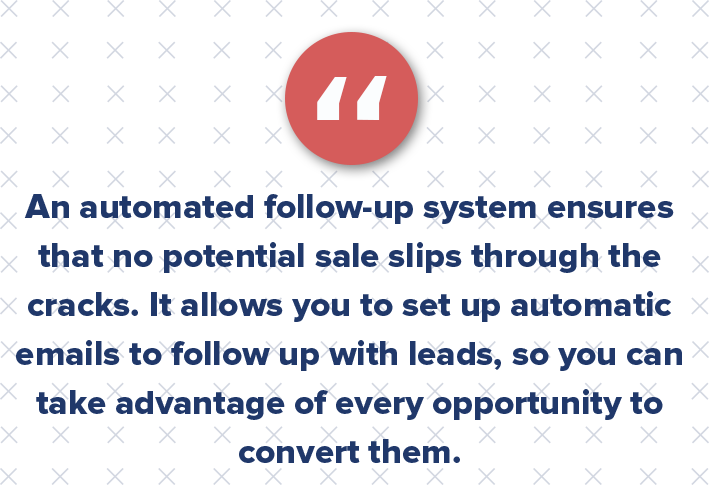
For example, you will want to set up automated follow-up emails for anyone who fills out a form on your multifamily website to book a tour, contact your leasing team, or if they download any of your free resources.
Don’t forget to use personalization tokens in the body copy of your email to ensure your message is catered to the specific resident. However, be cautious with personalizing your subject lines, as recent studies found that emails with personalized subject lines get lower open rates (18.79%) than those with generic ones (22.14%). Further, the personalized subject line click-through rate was 1.74% versus 2.74%.
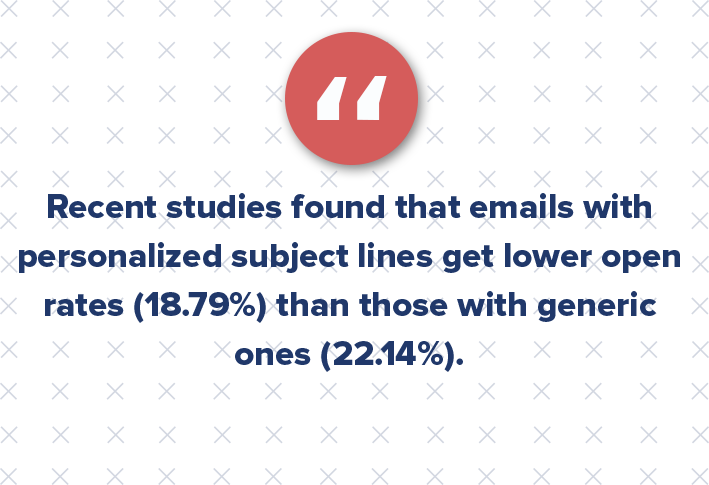
4. Detailed customer profiles (AKA get to know your prospects)
The more information you have about a resident, the better equipped you are to provide them with what they need and want. A detailed resident profile will include contact information to lease history and interests.
This profile can also help you refine your resident buyer persona. Potential residents should never be looked at as an entry in a database or a contact in a CRM. Multifamily marketing messaging is meant to connect and provide powerful content that is useful and relevant to their problems. All the while, it’s helping transform your properties through real and honest data.
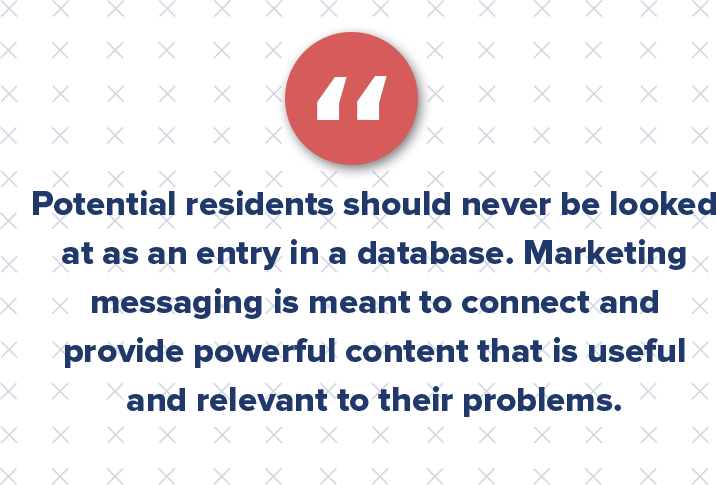
What renters perceive is reality to them, which is why it is important to ensure your residents feel comfortable and welcome at your property. This requires properties to anticipate the needs of community members, and the best way to do that is to get to know them.
Qualifying your apartment leads to increase conversions
Just because a lead is sales-qualified does not mean they are a good fit. As a multifamily marketer, you’ll likely never know if a lead meets sales’ needs. That requires sales to engage with the lead first. Instead, it’s imperative to use lead qualification methods to ensure your apartment leads are qualified from a multifamily marketing perspective and ease sales jobs on the rest.
With the right CRM tool and marketing automation software, you can more easily determine who your hot leads are and take action, so no sales fall through the cracks. Or, you can use this information to nurture those leads to eventually become leases. Ultimately, with the right tools, you’ll be well on achieving your leasing goals.




